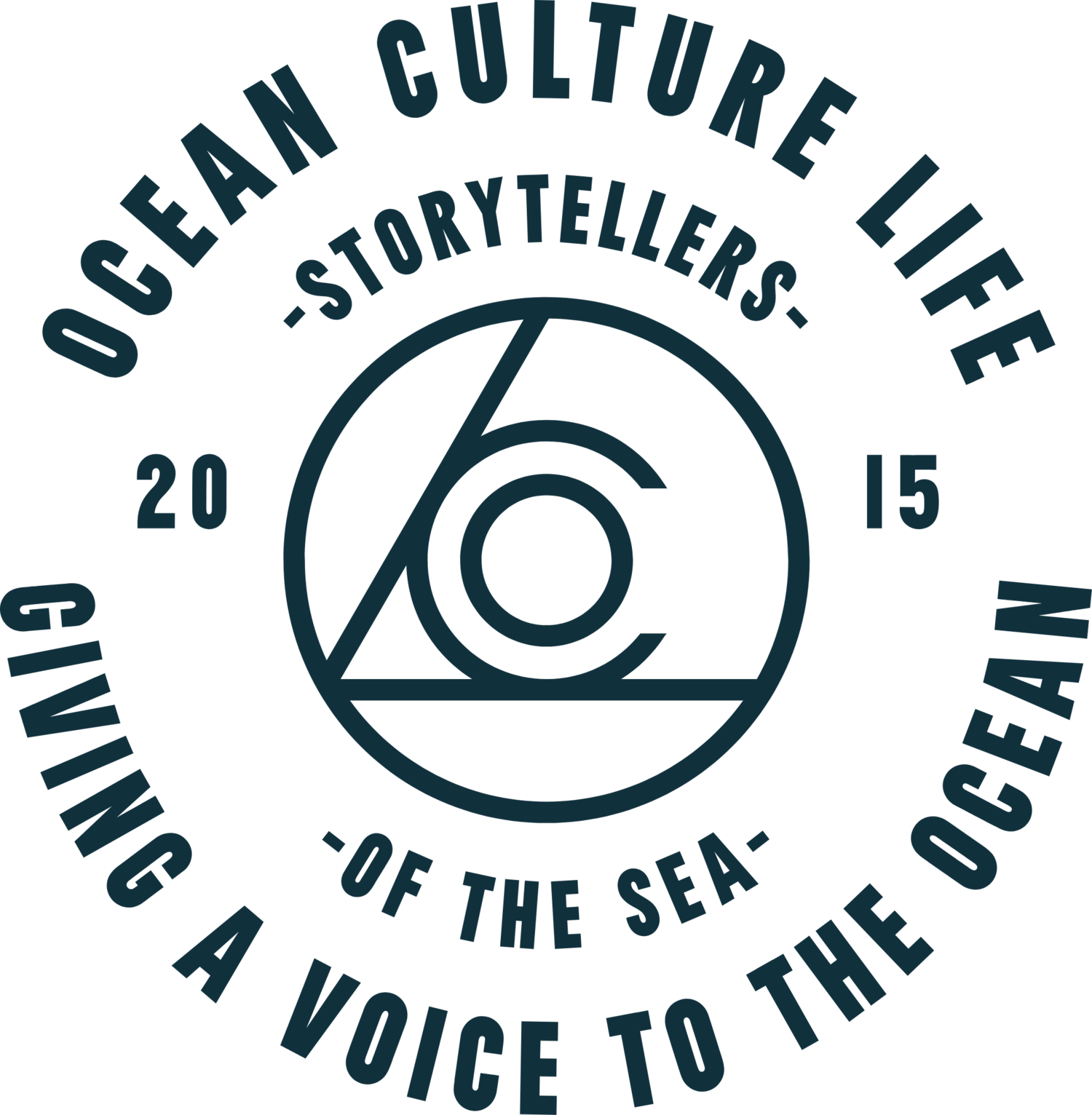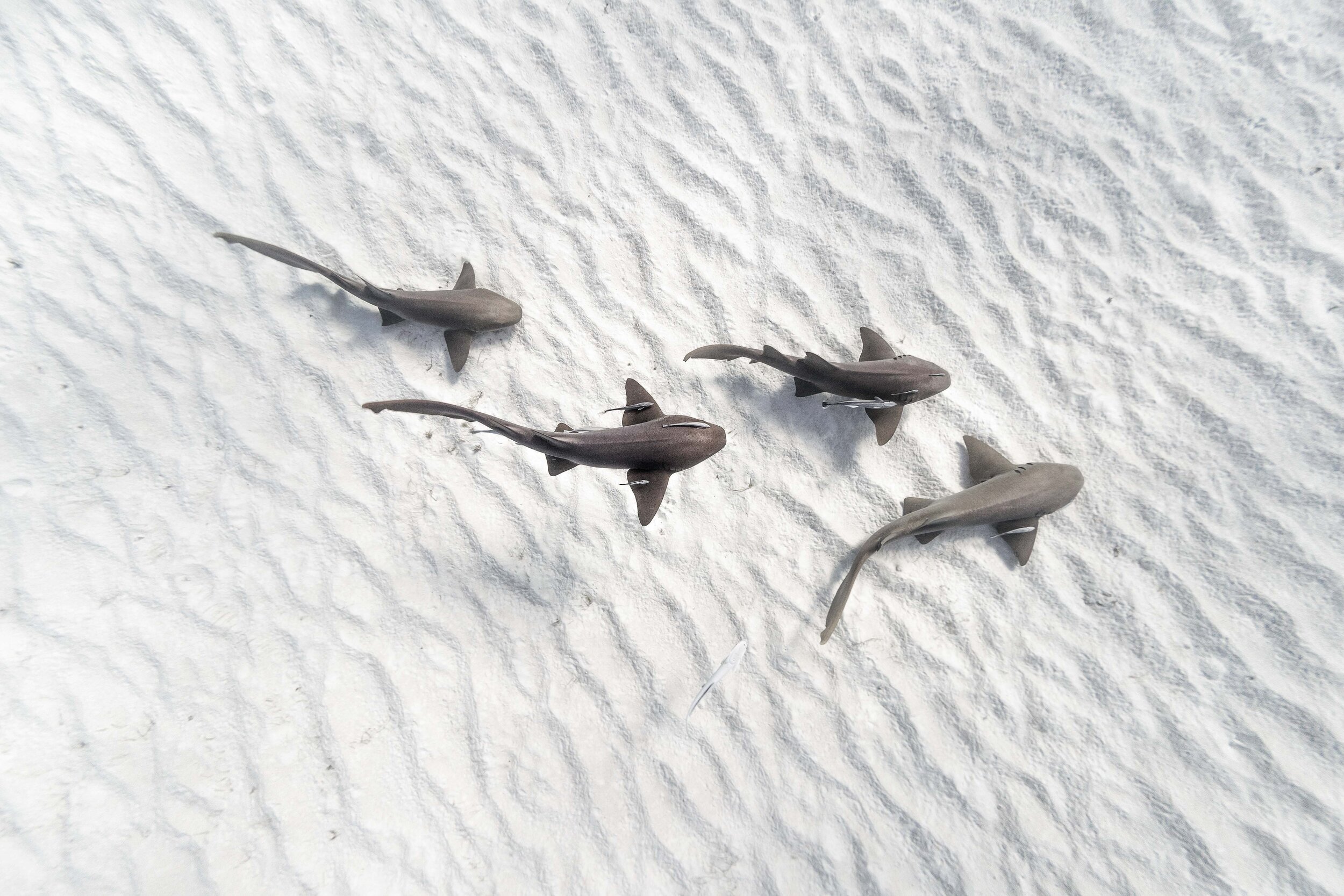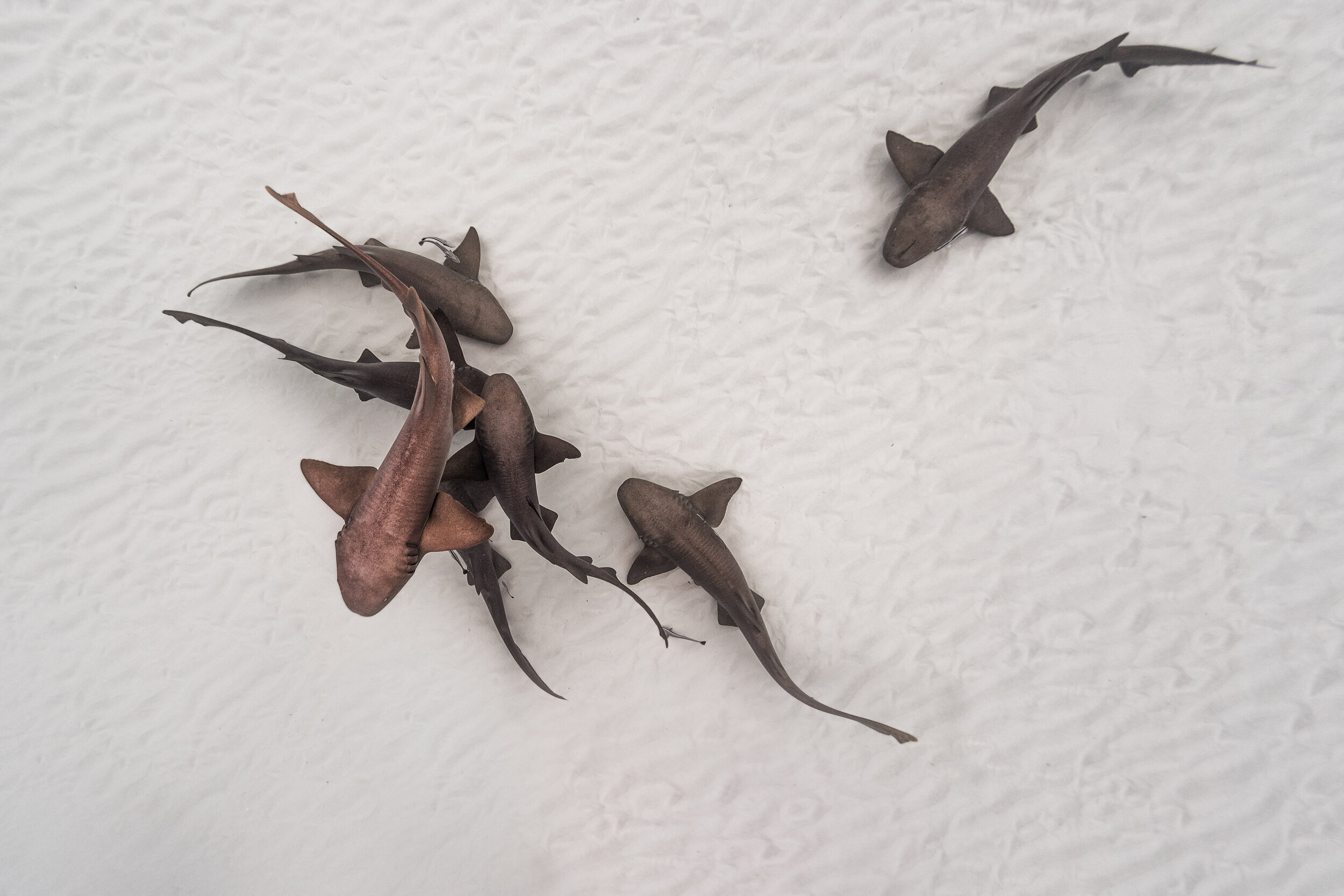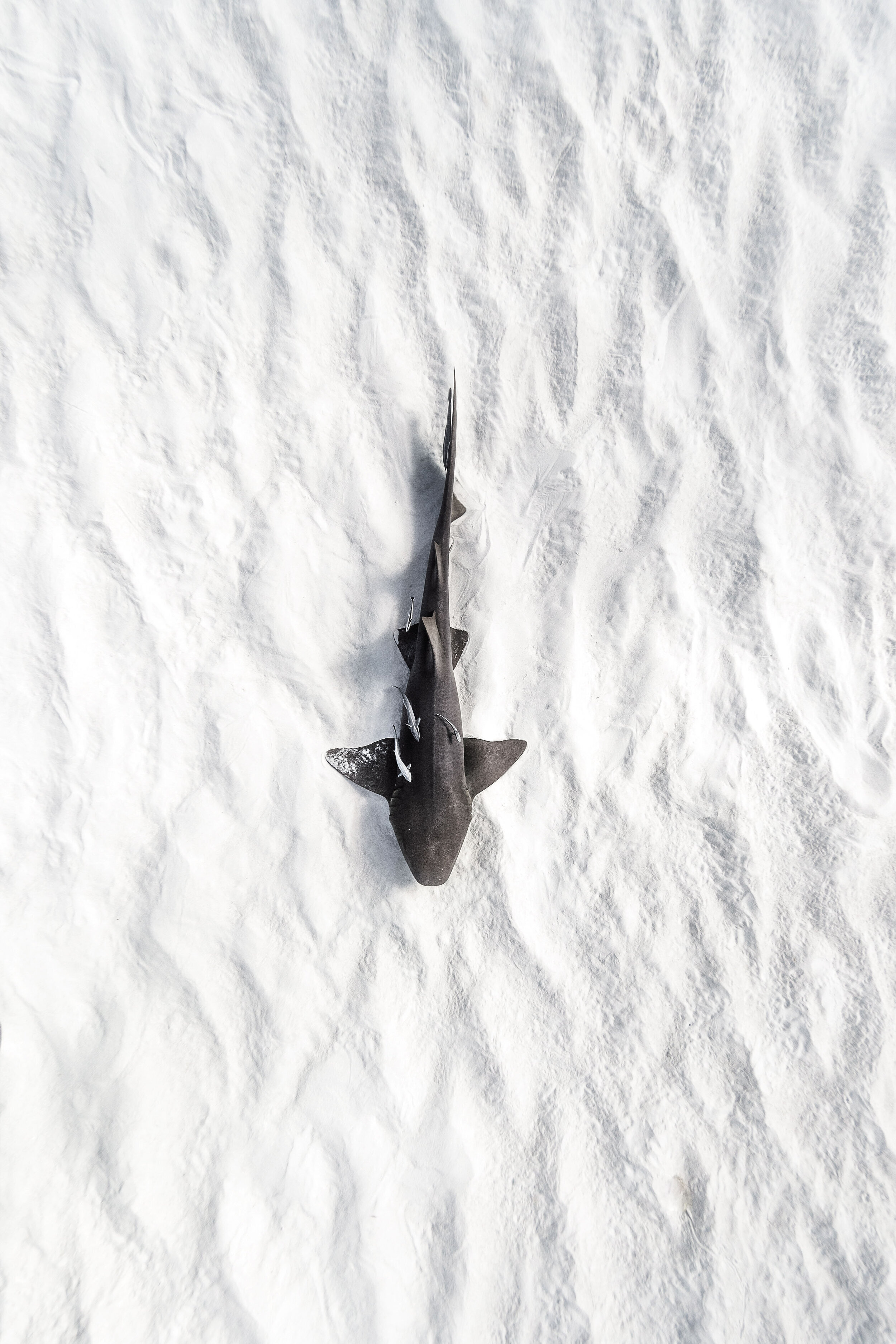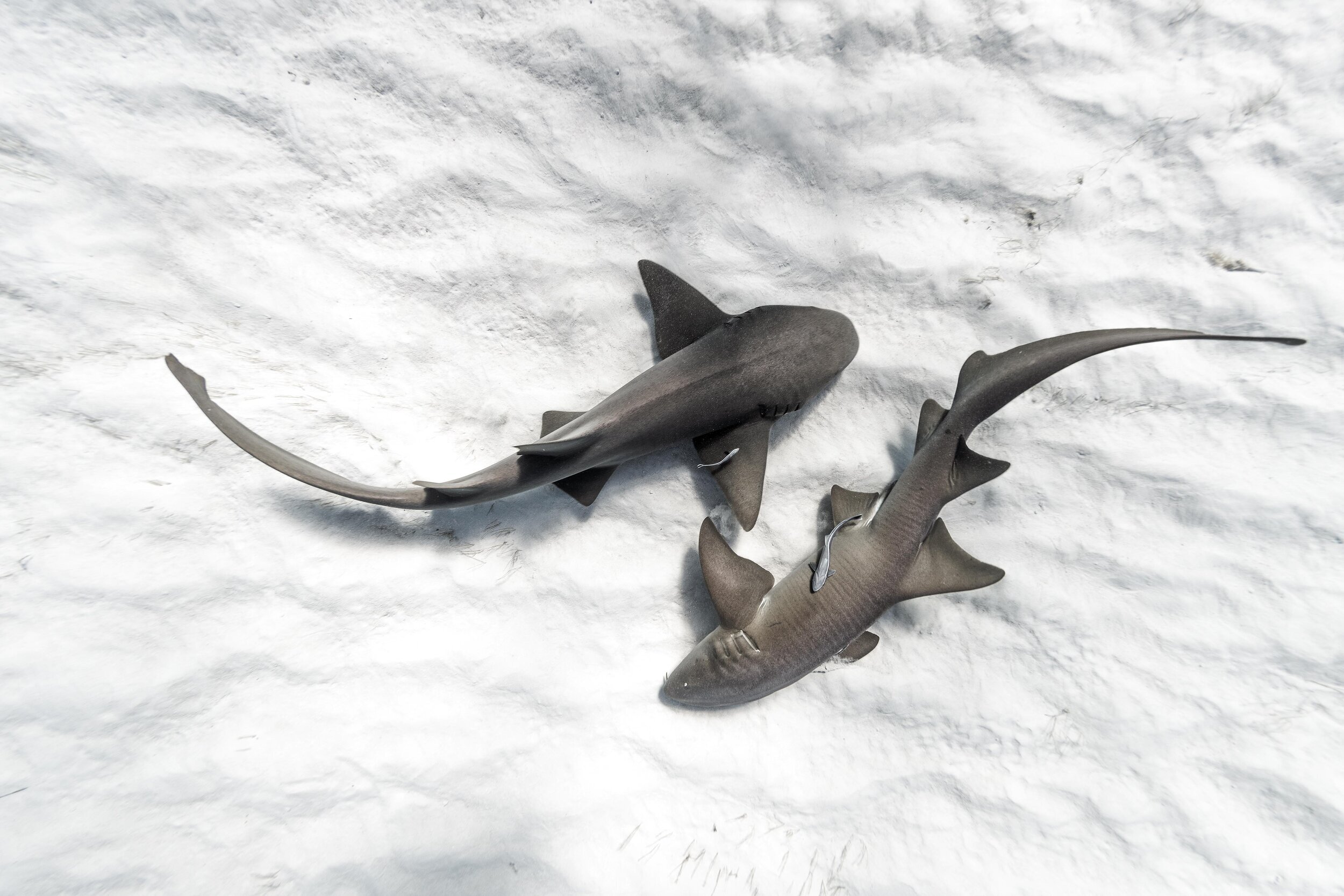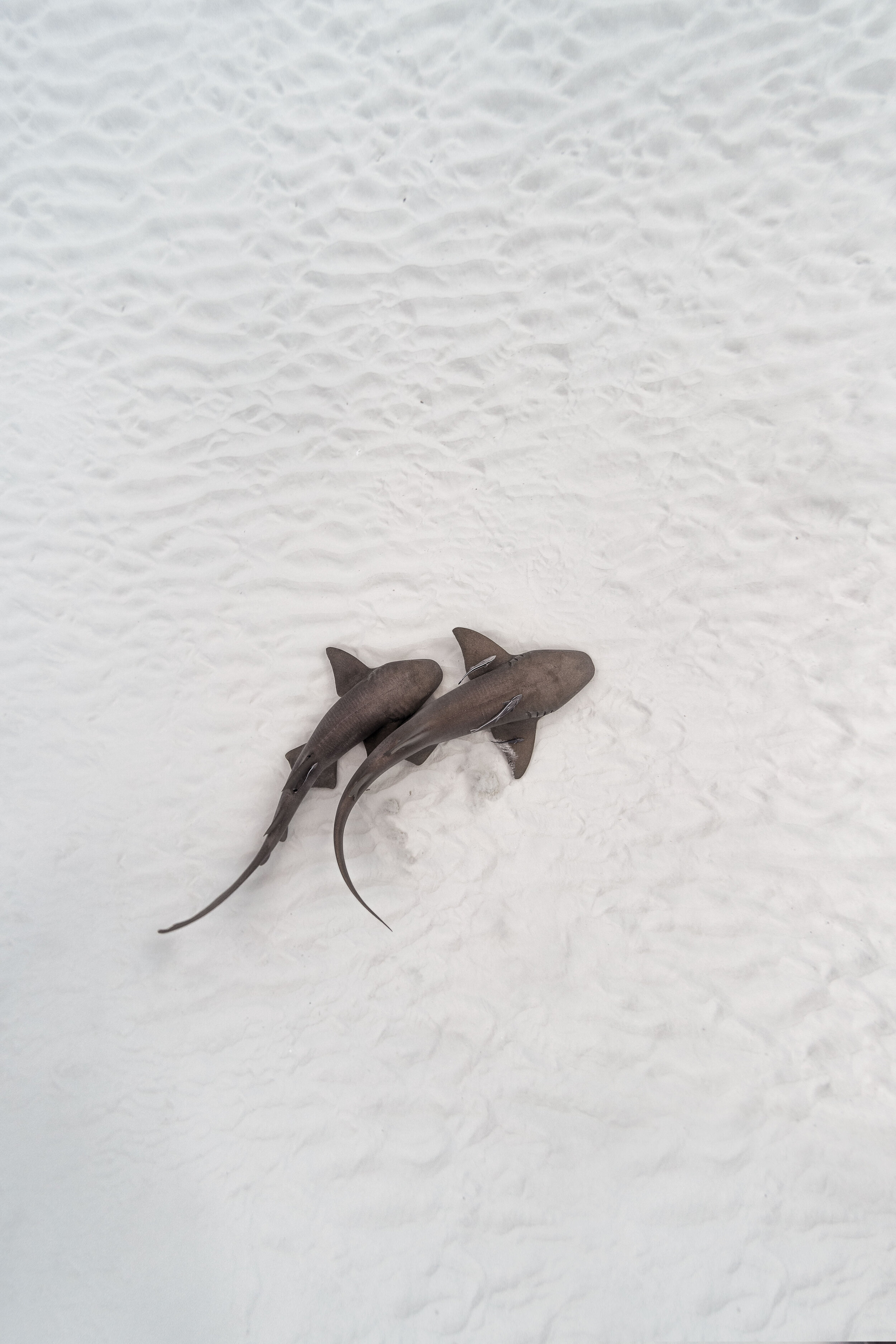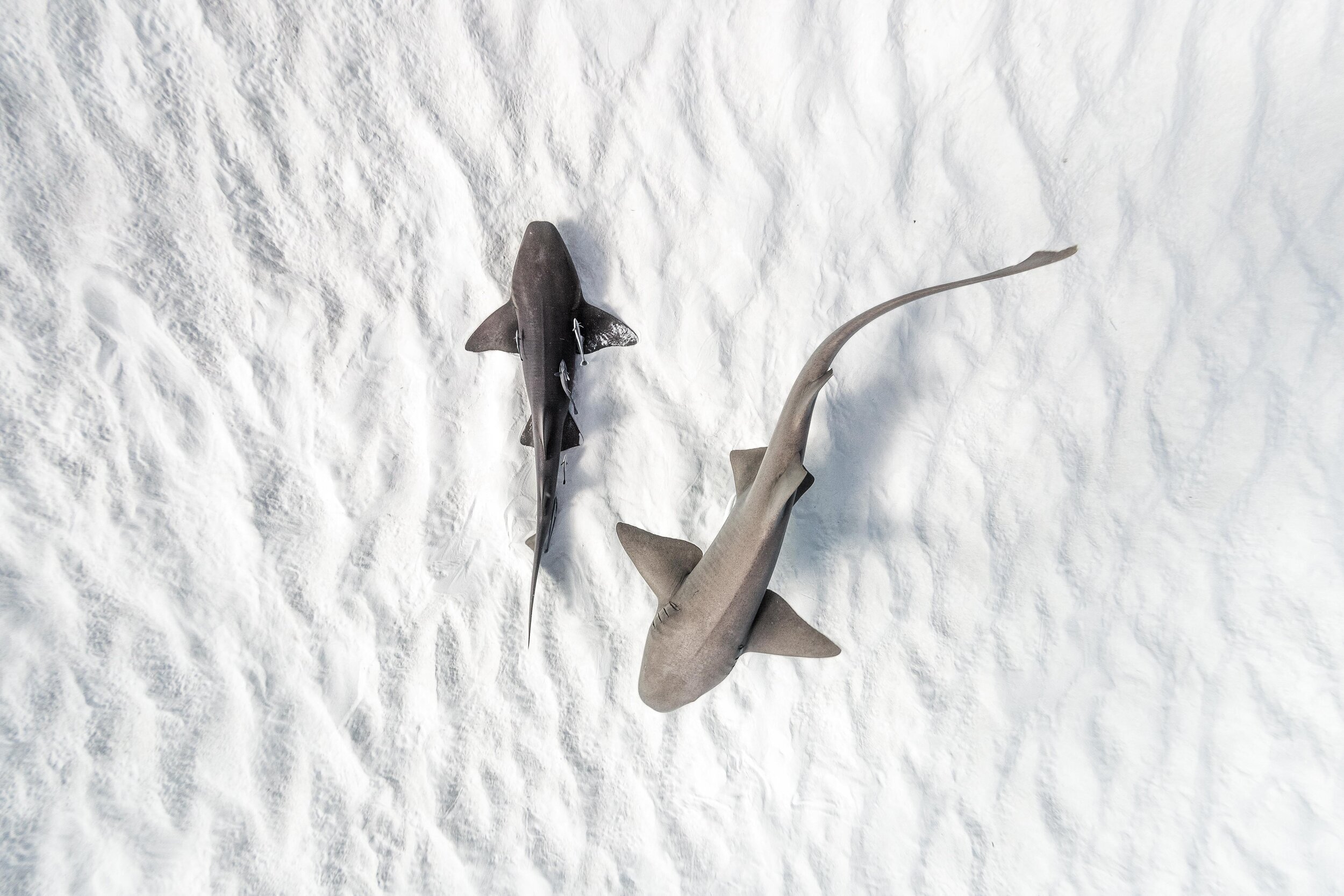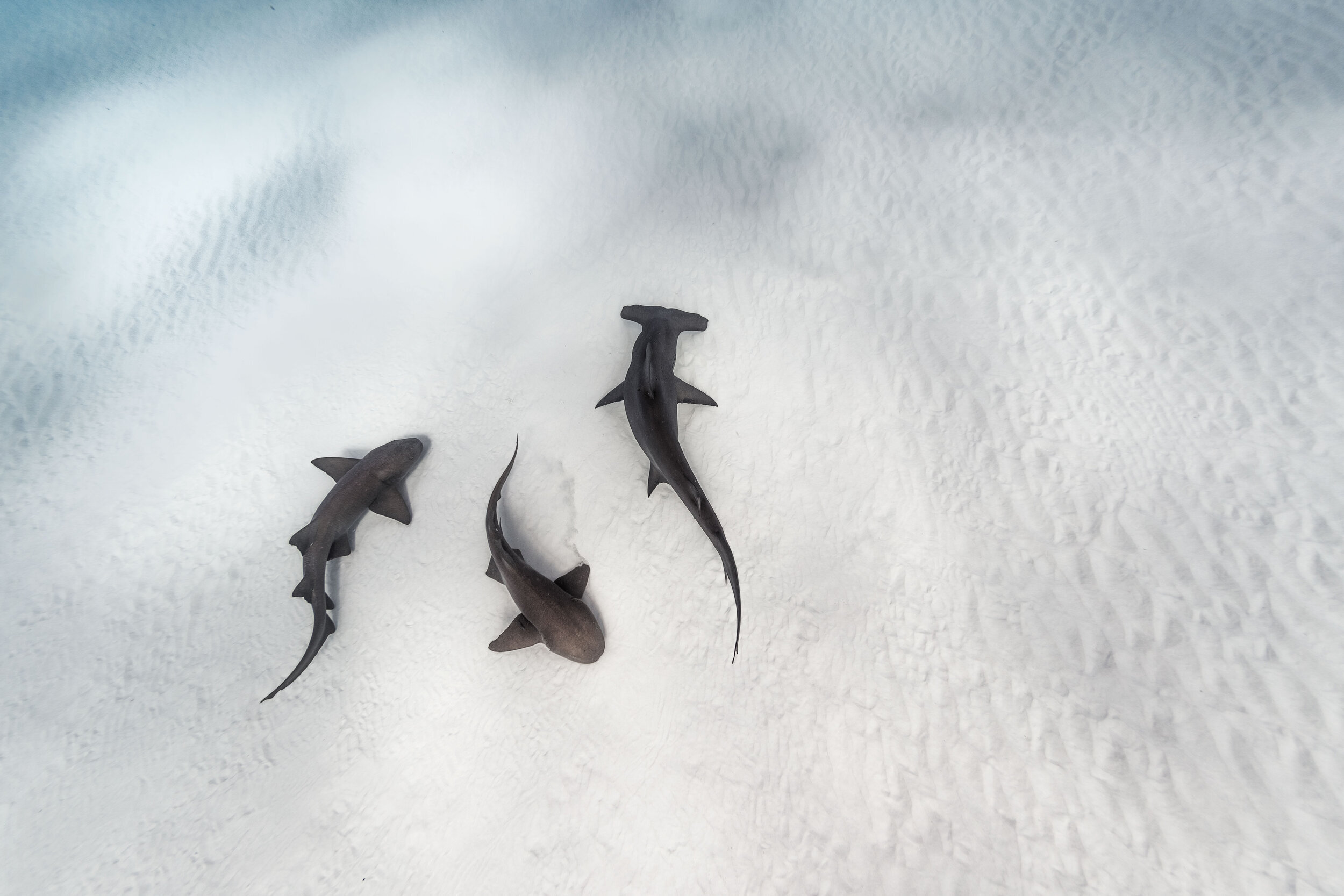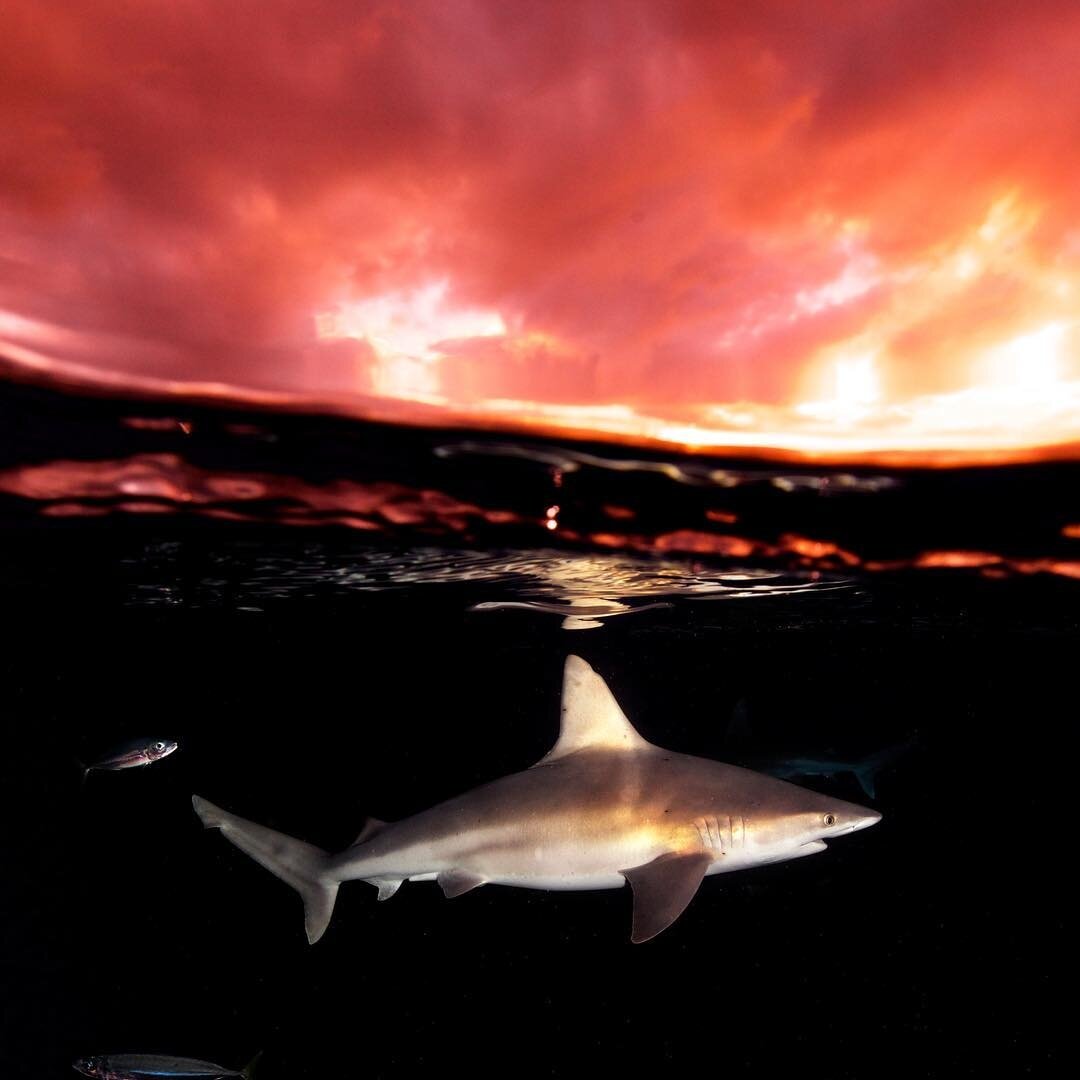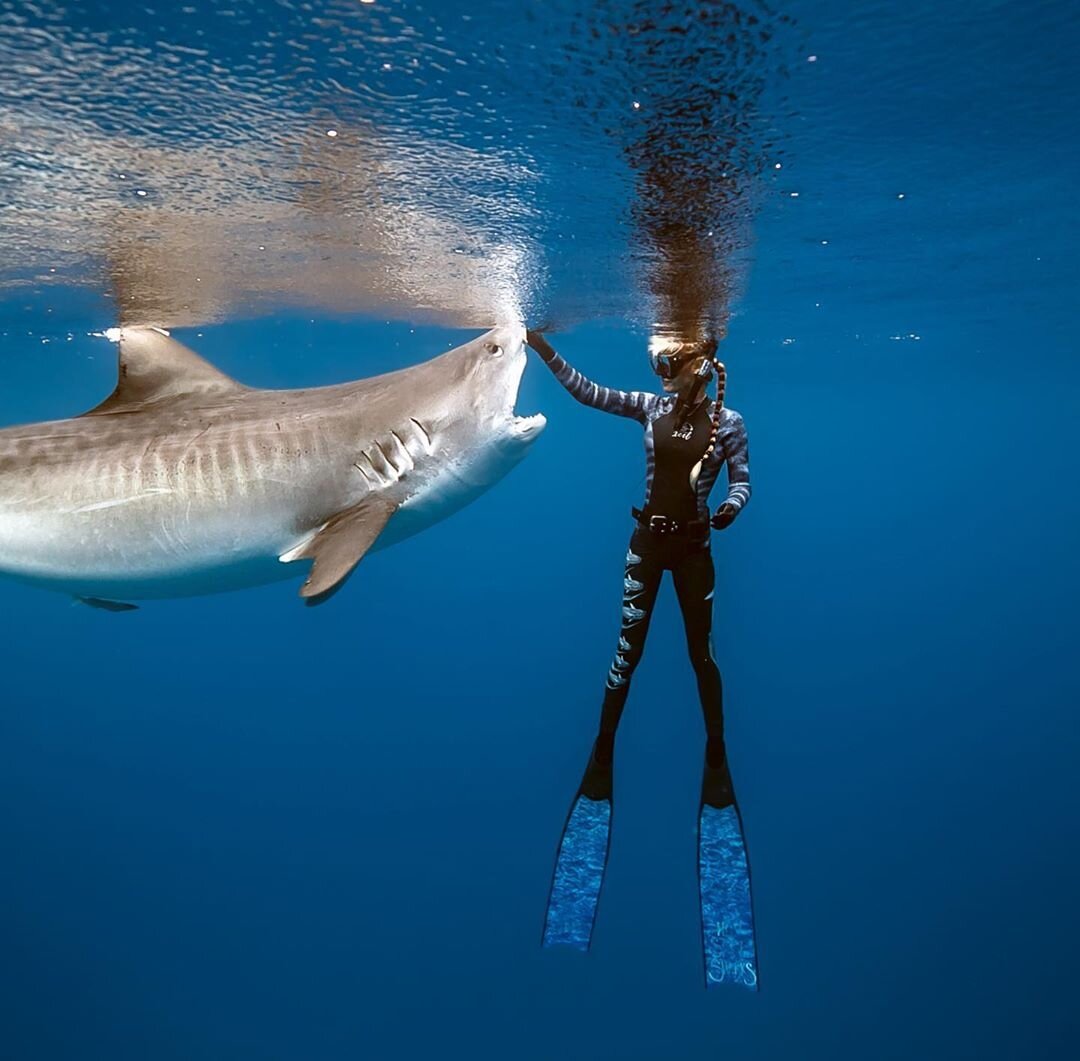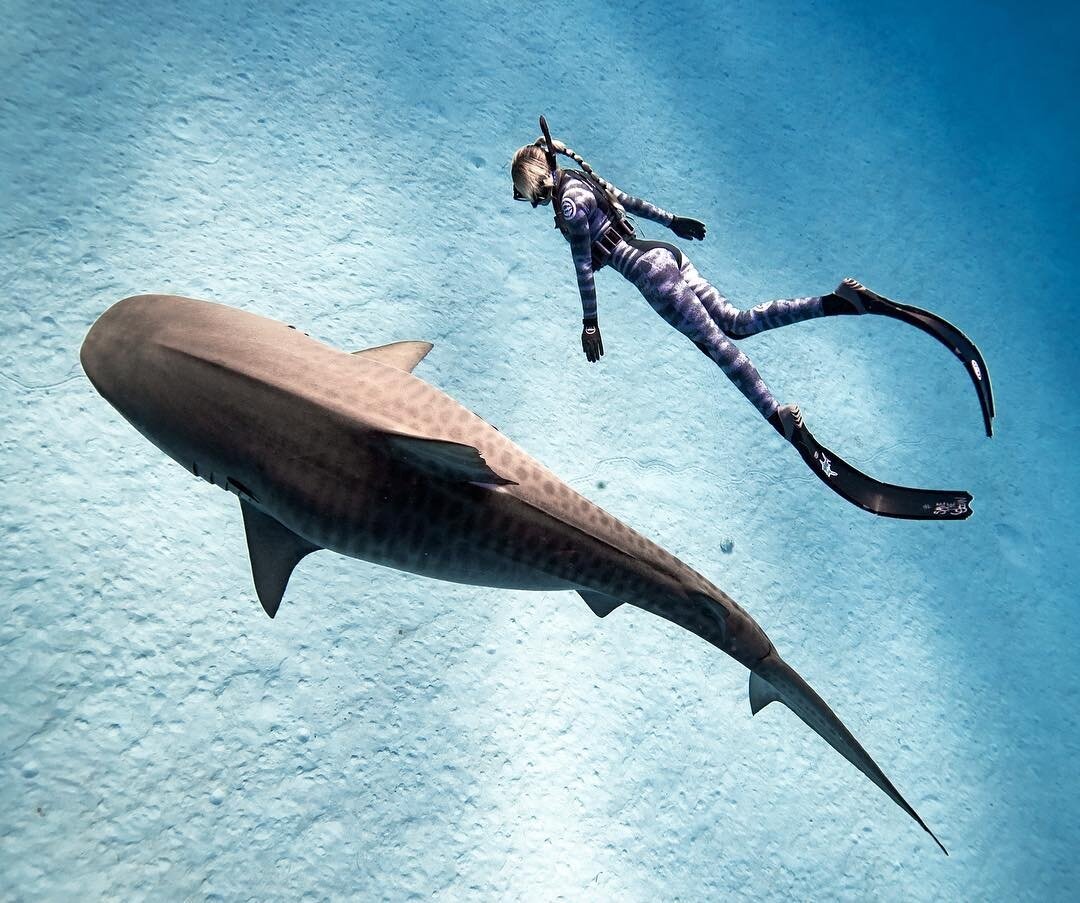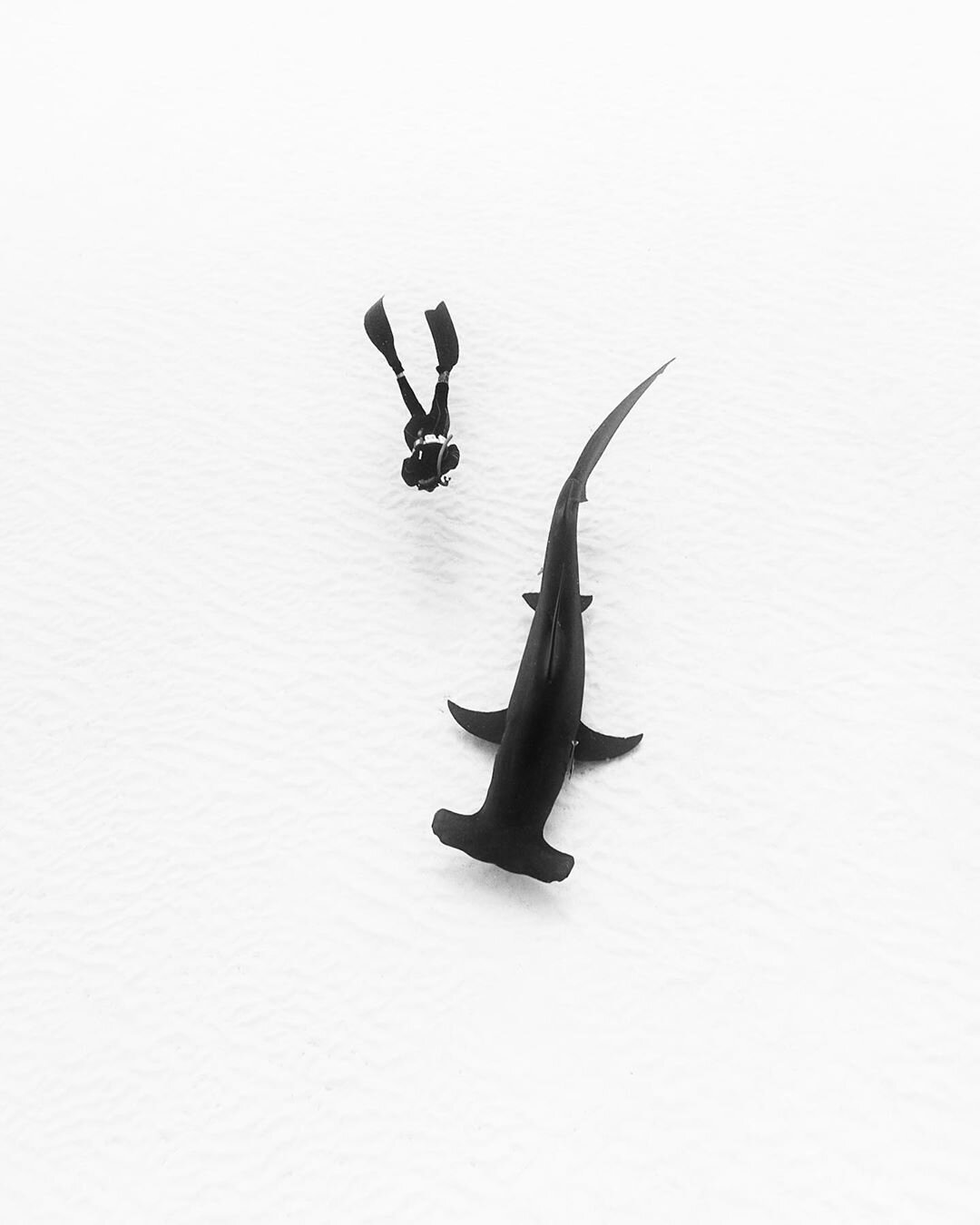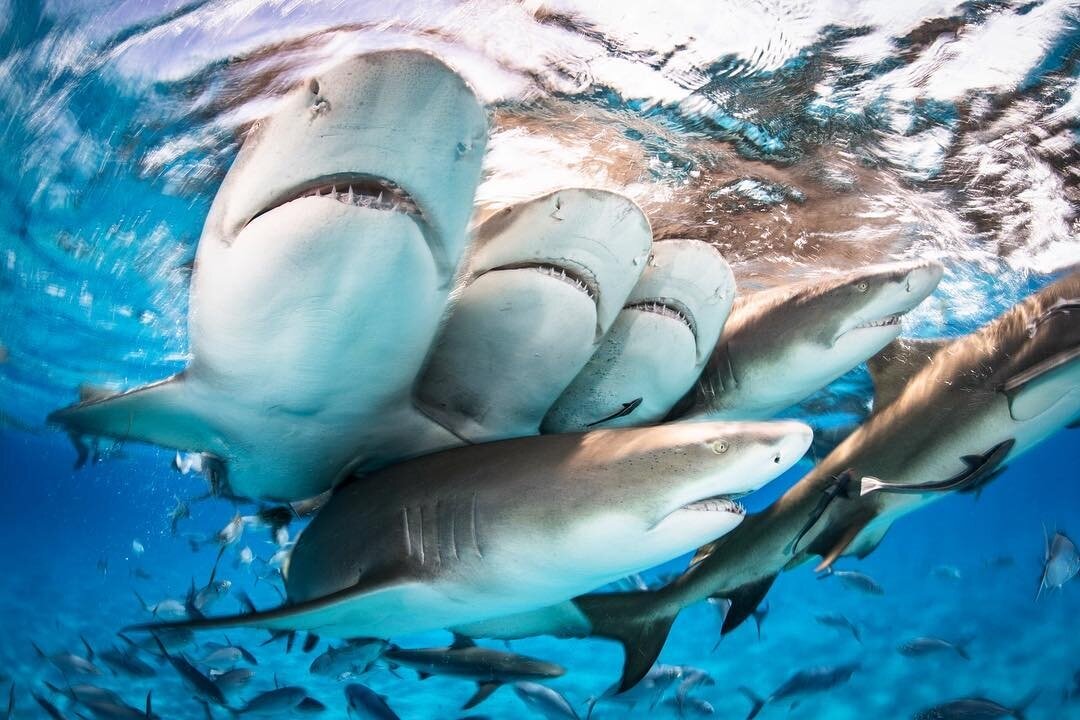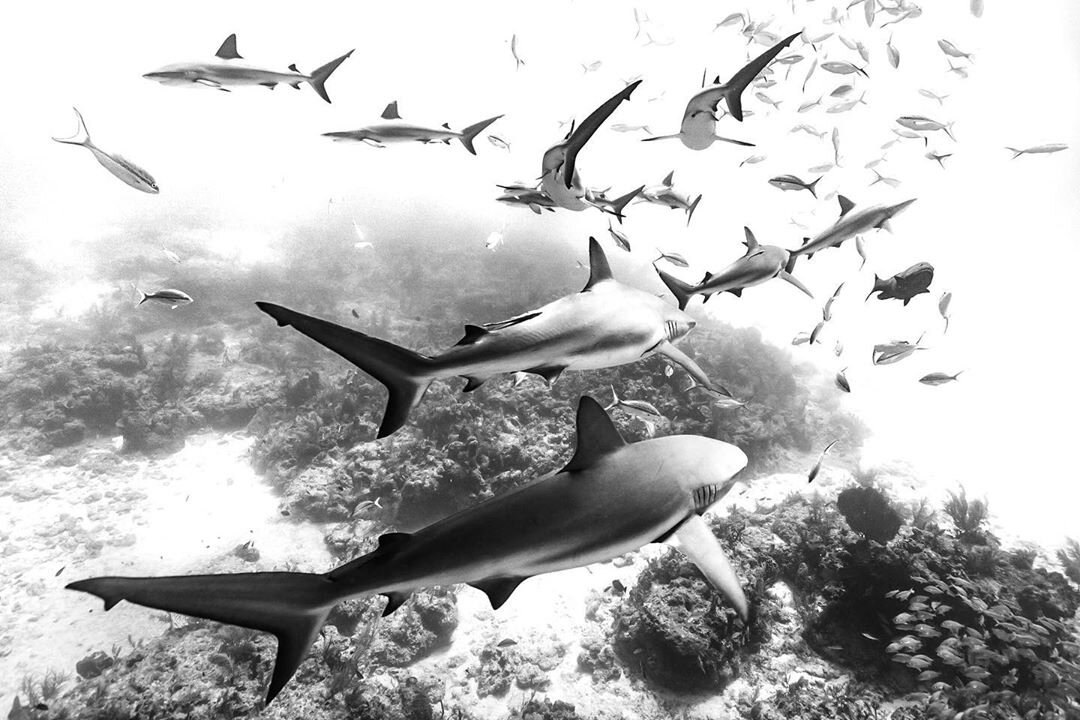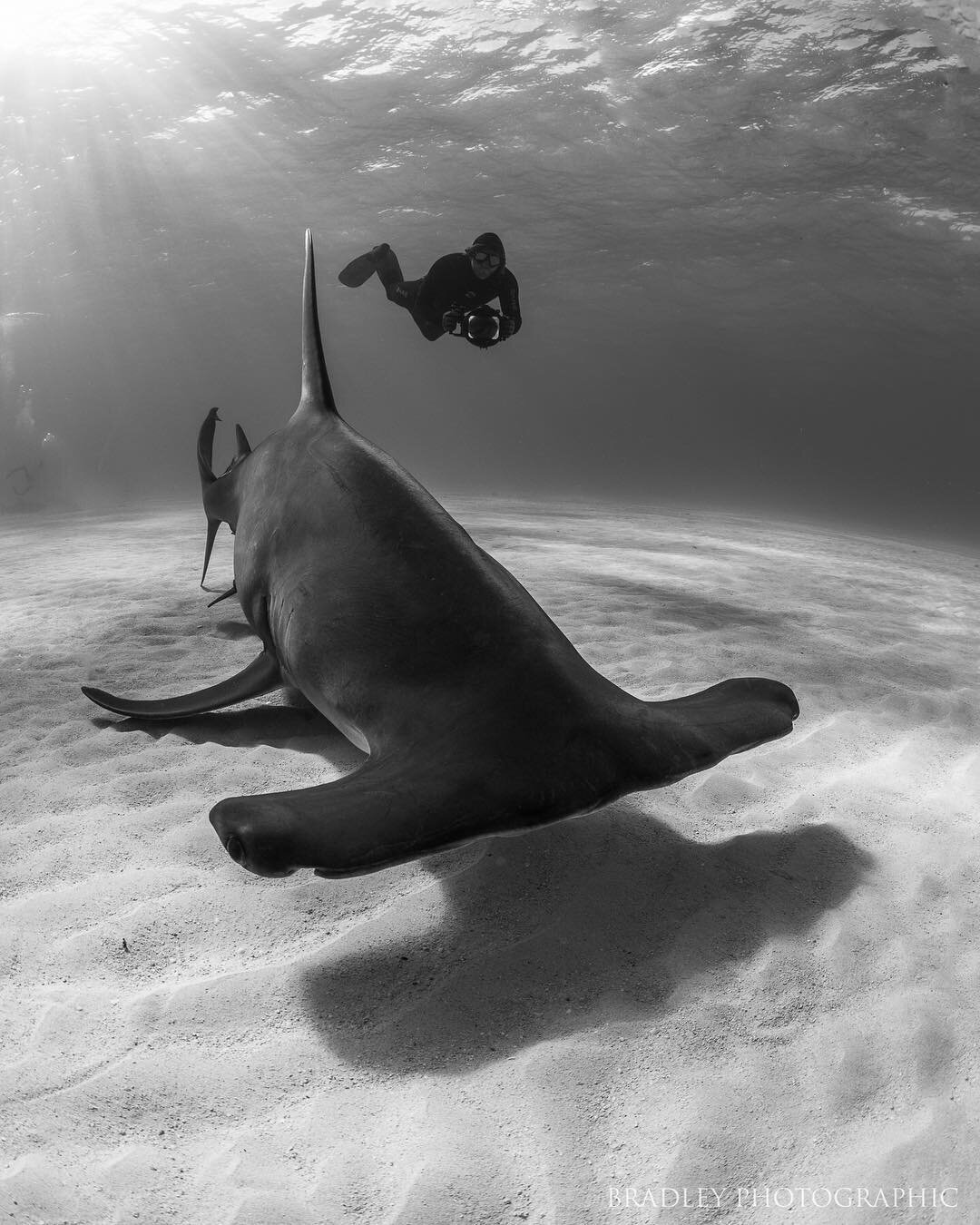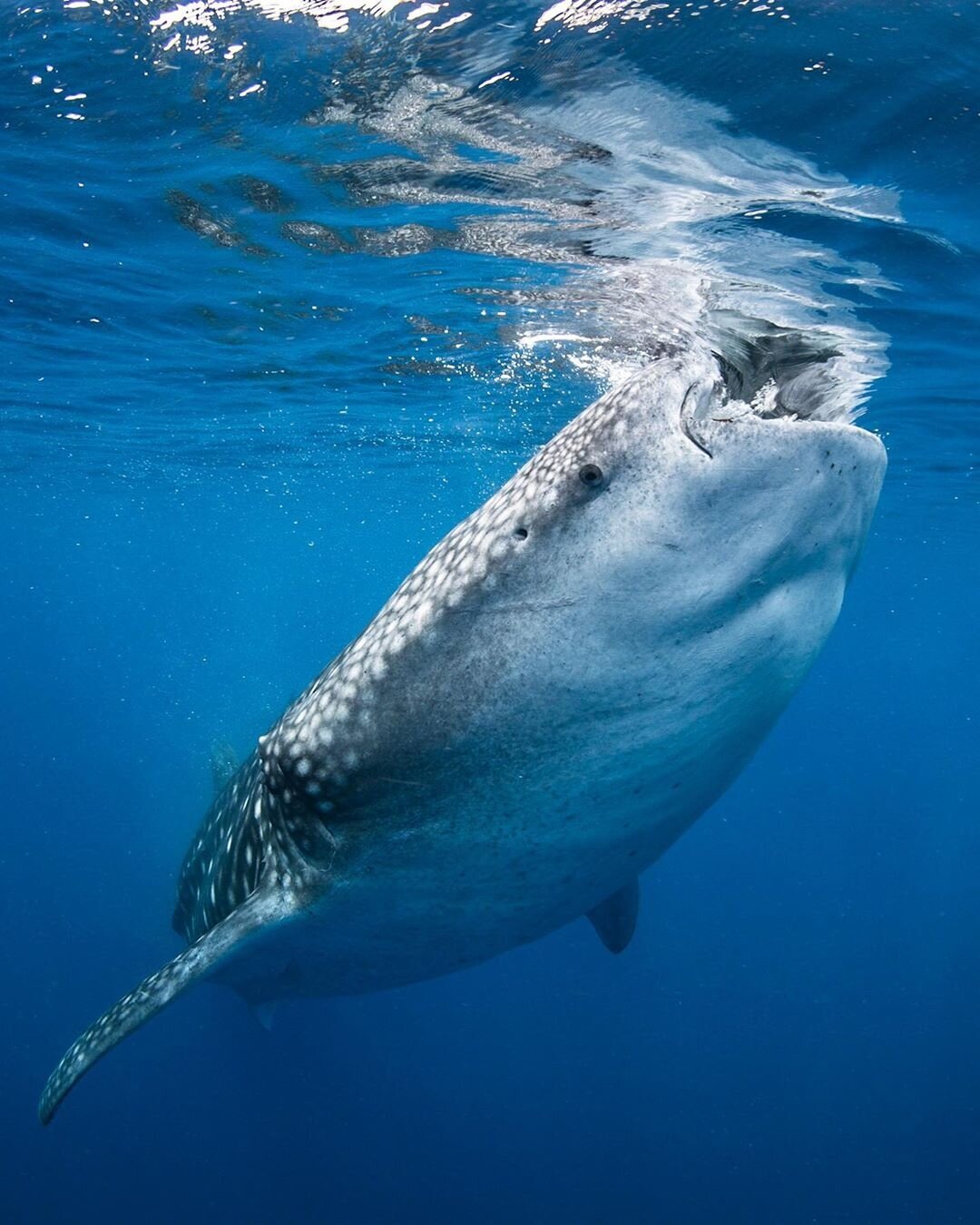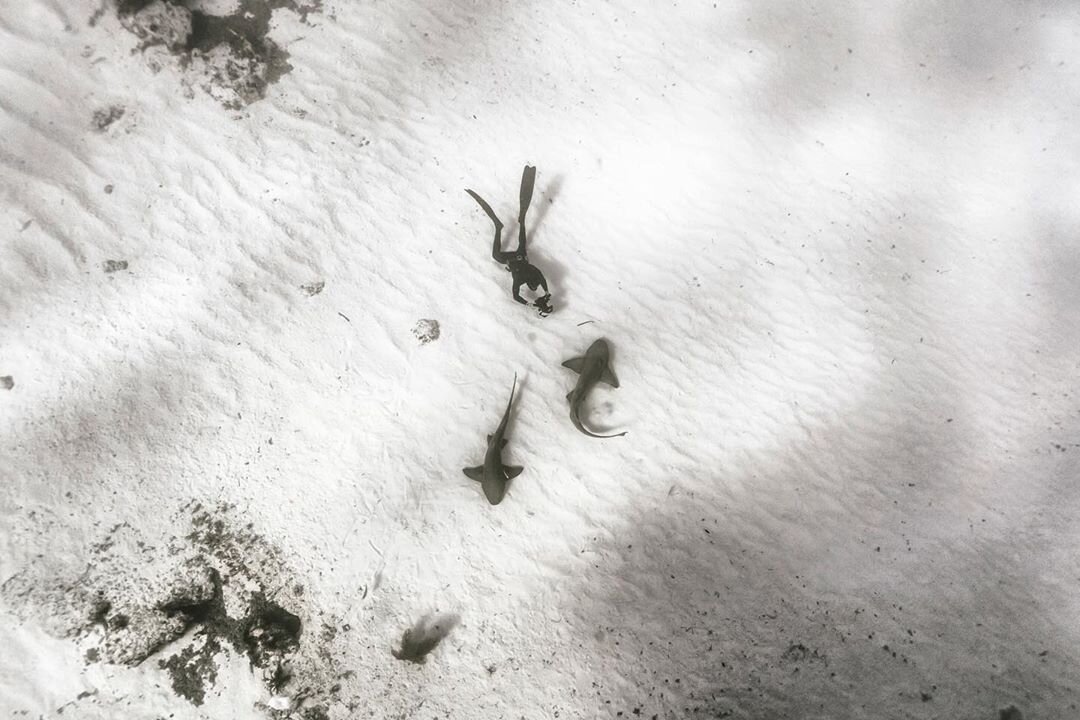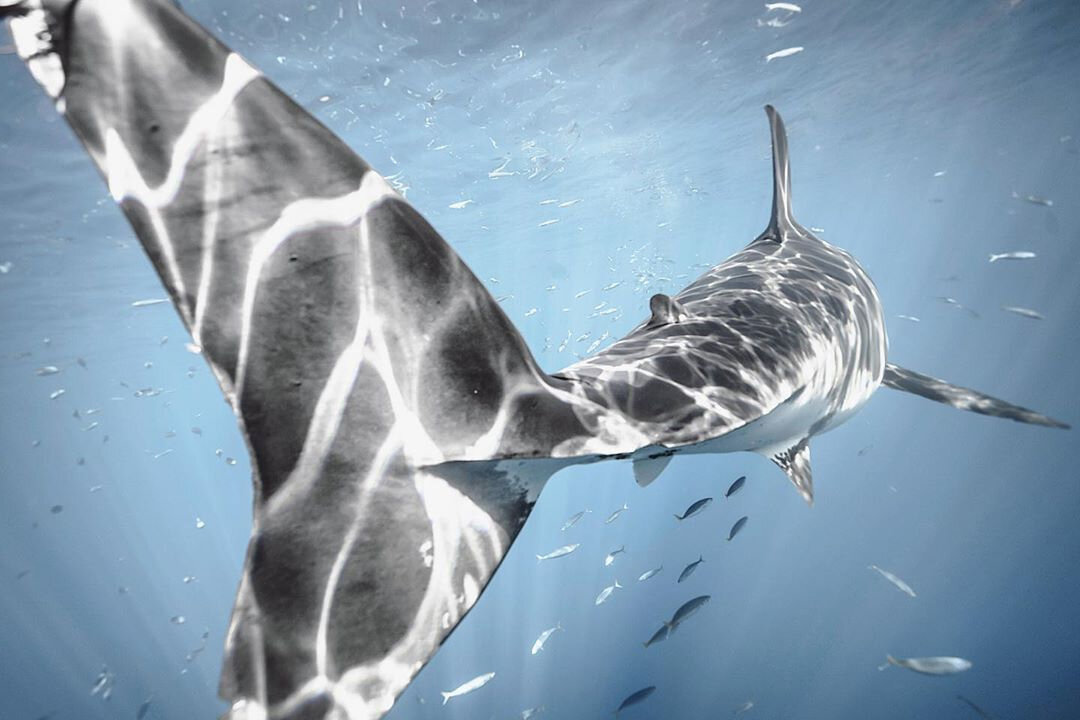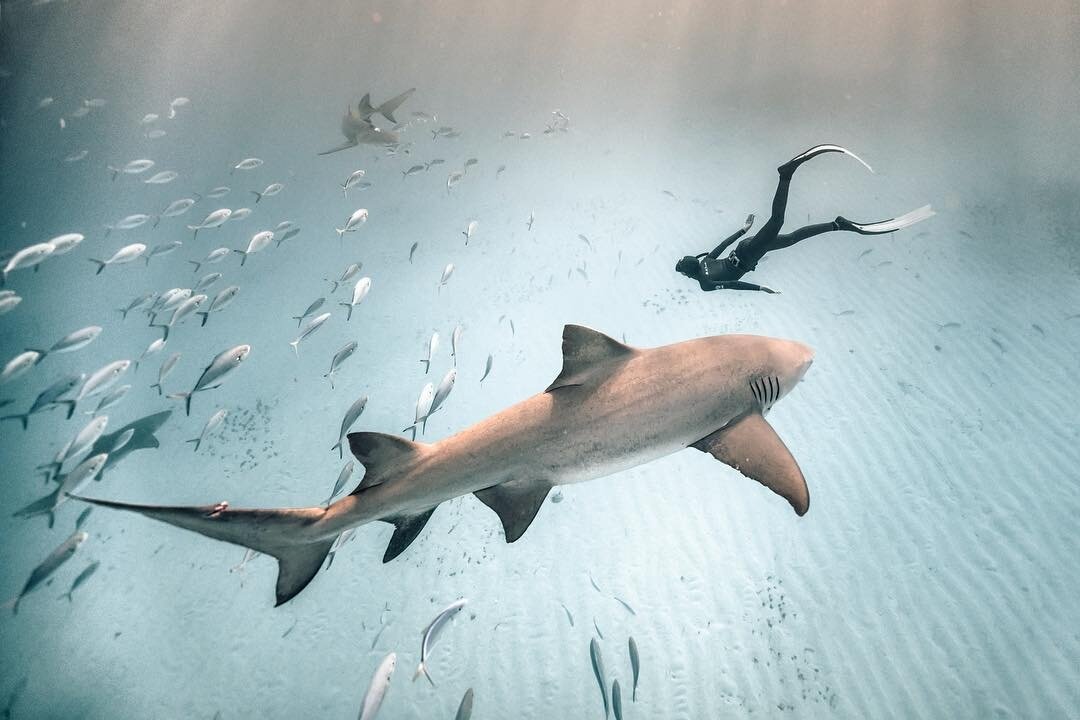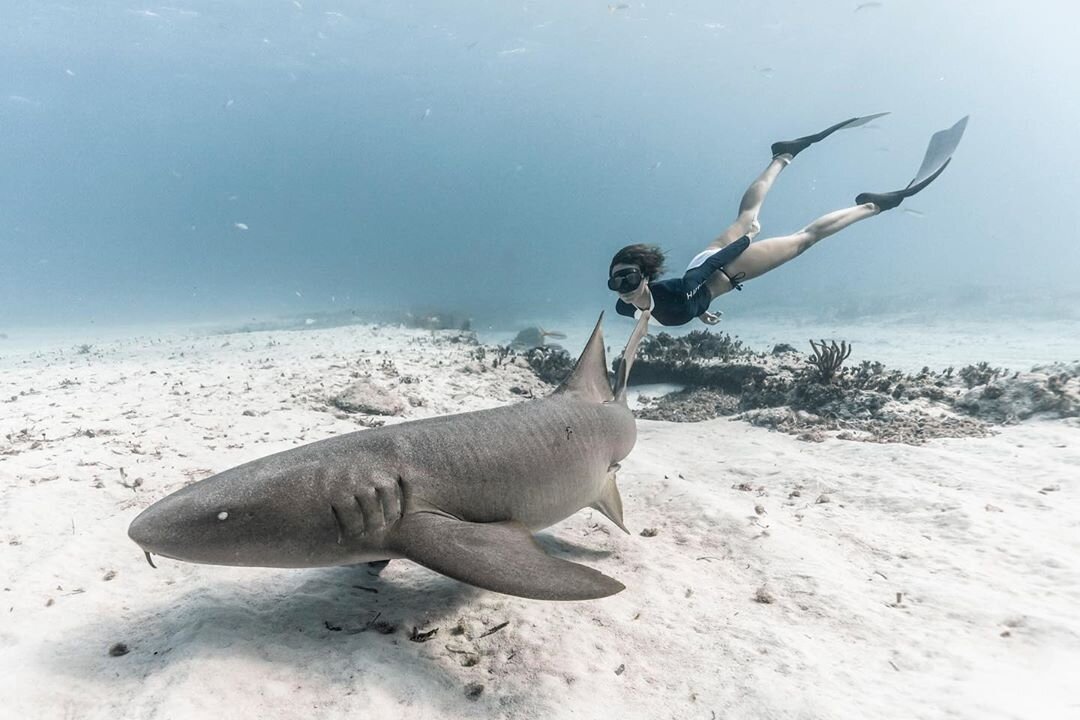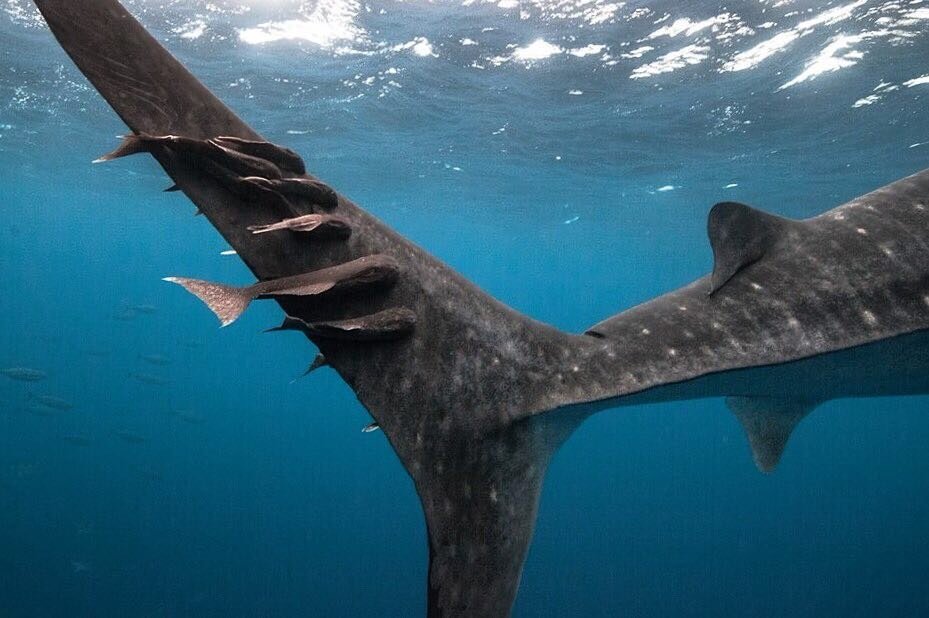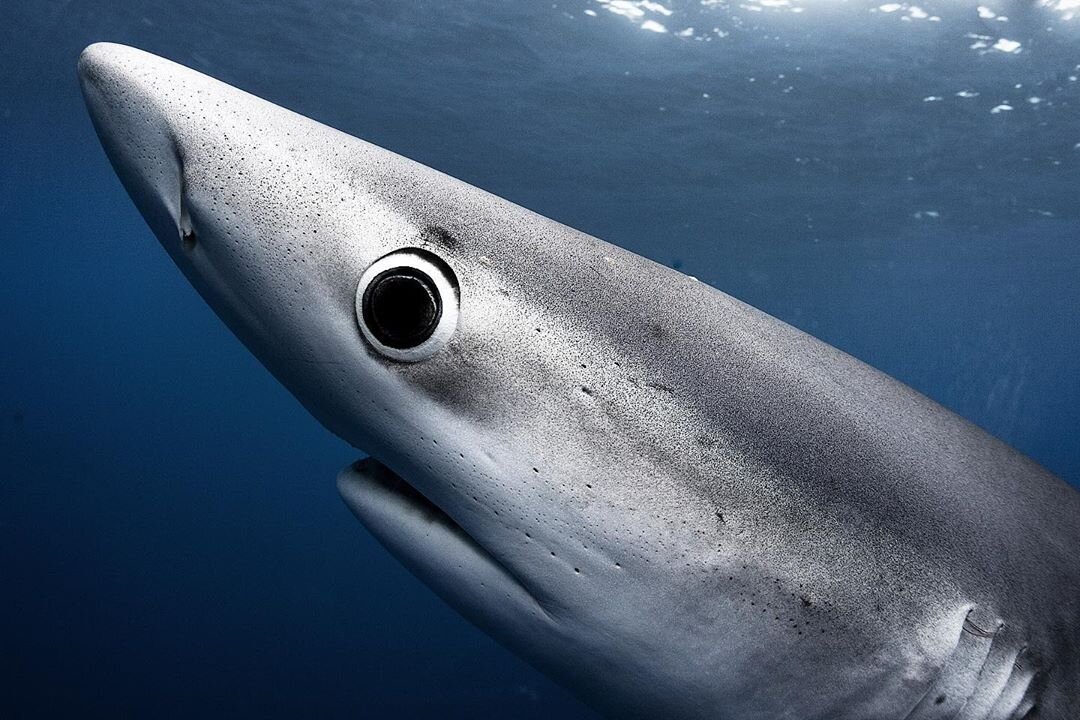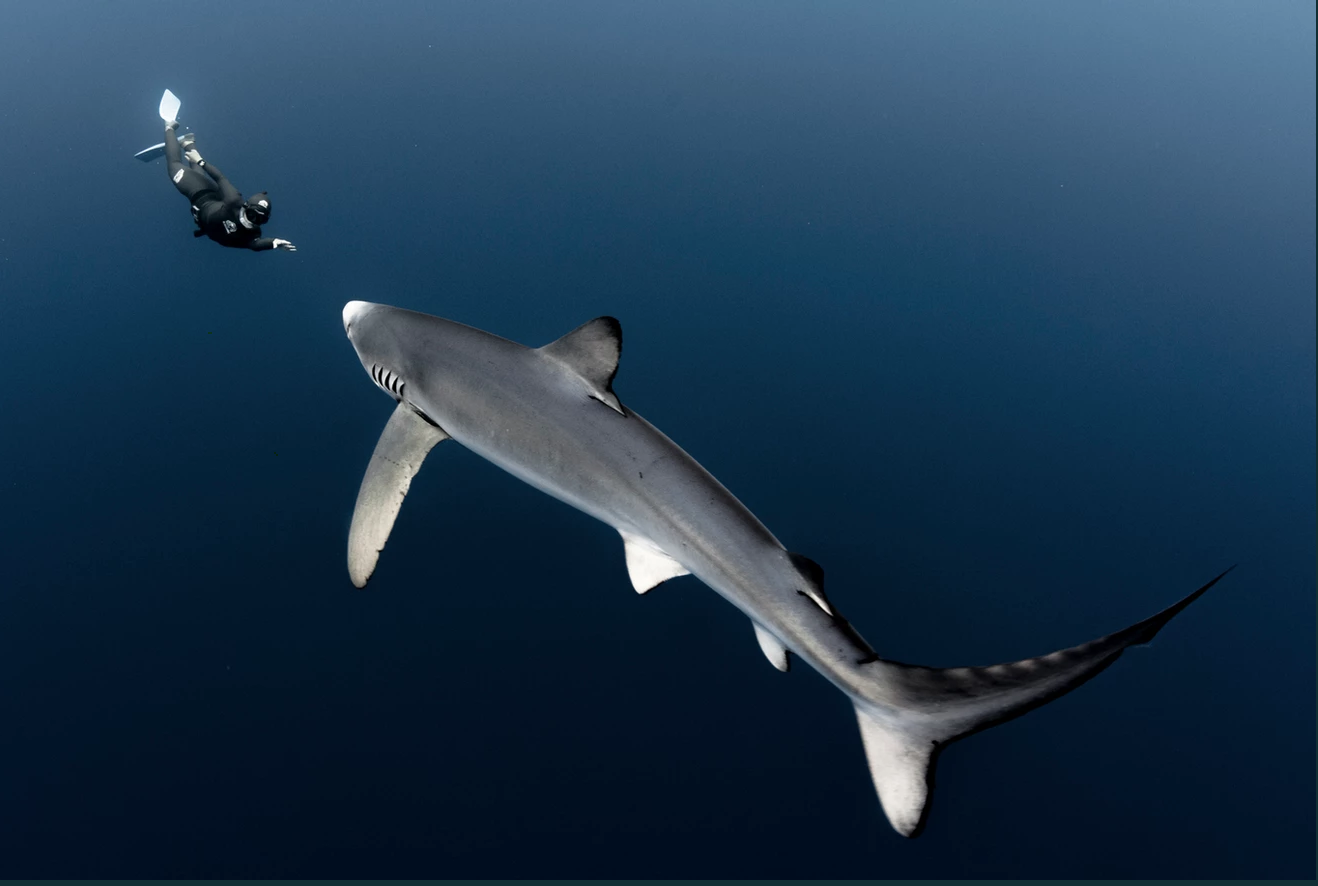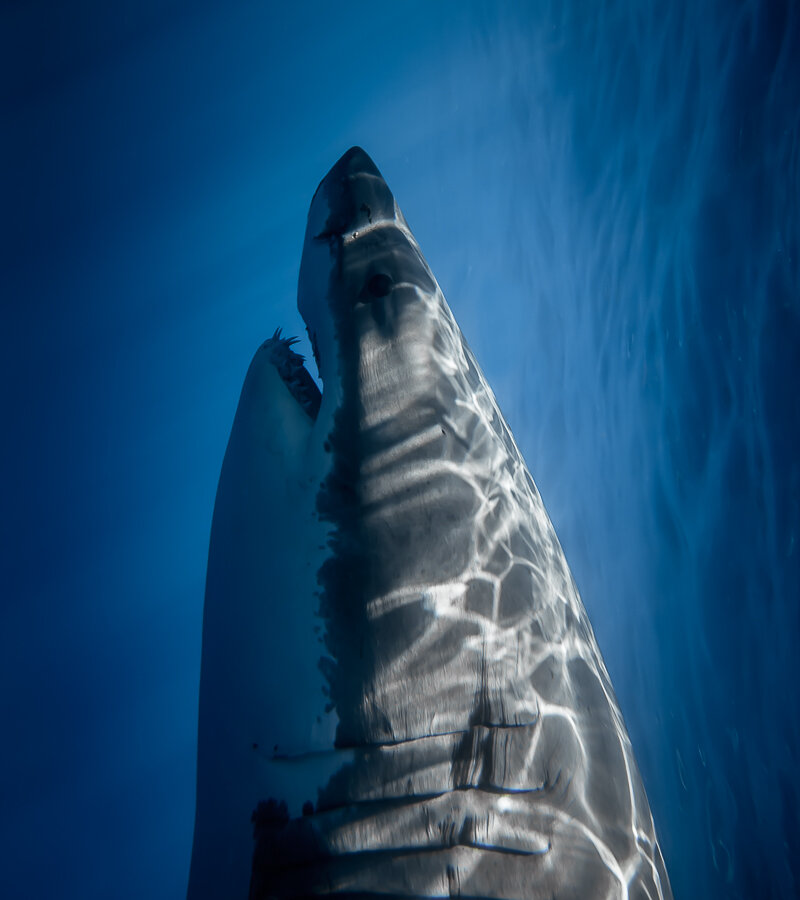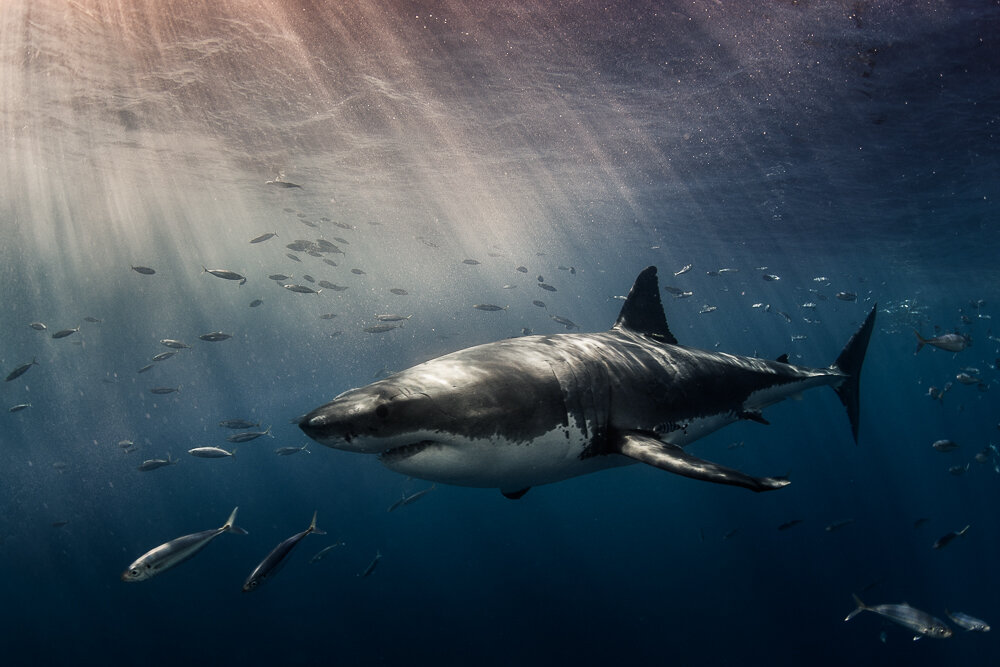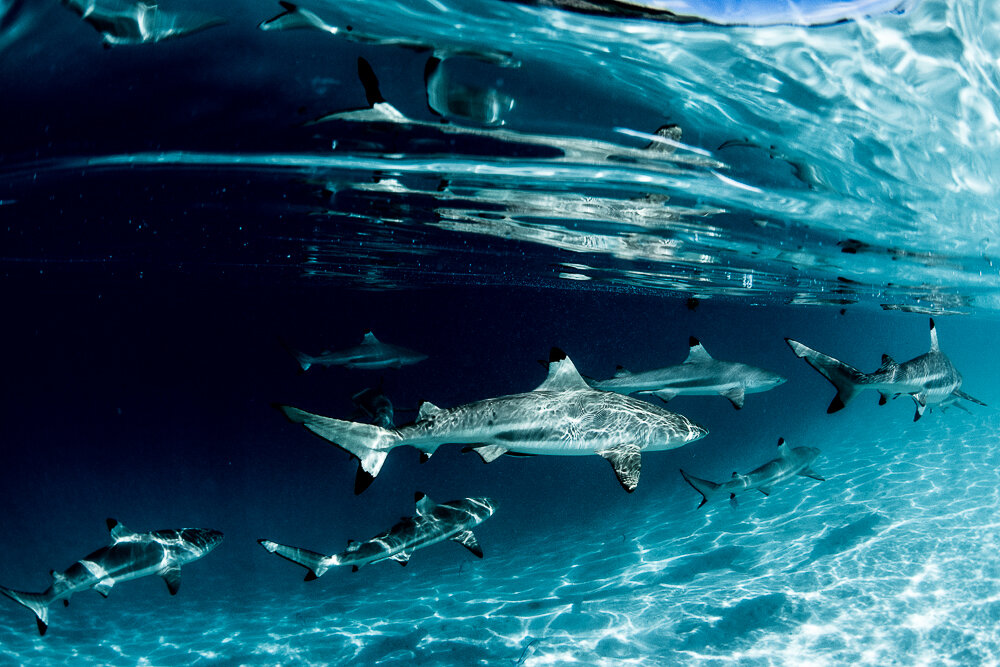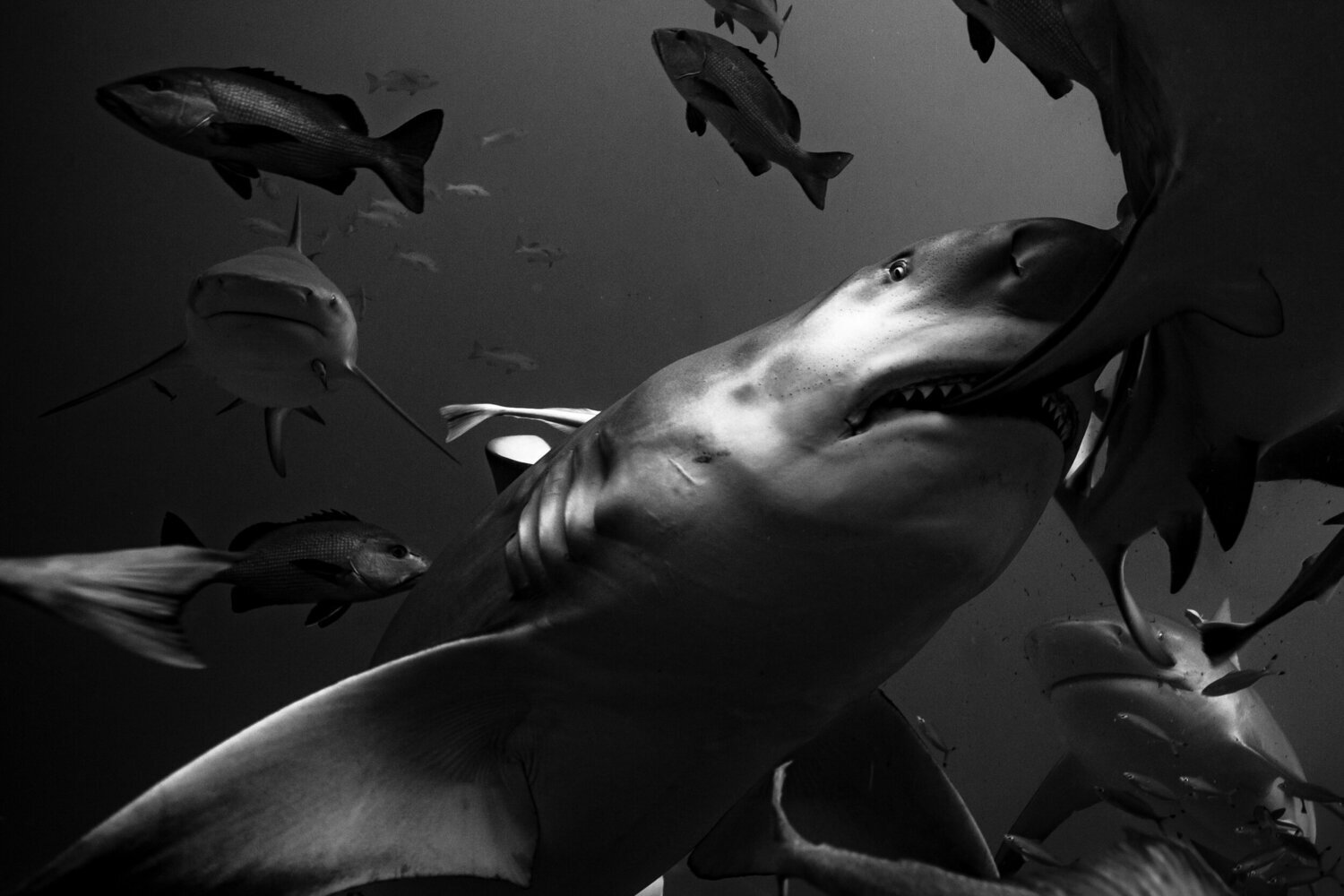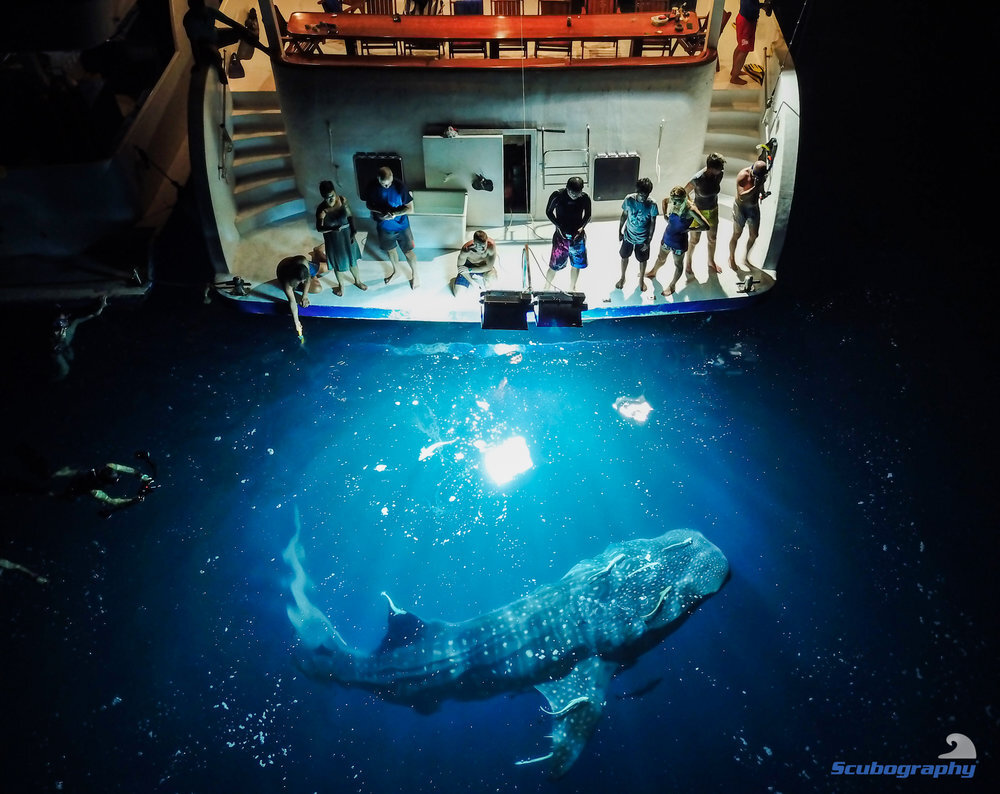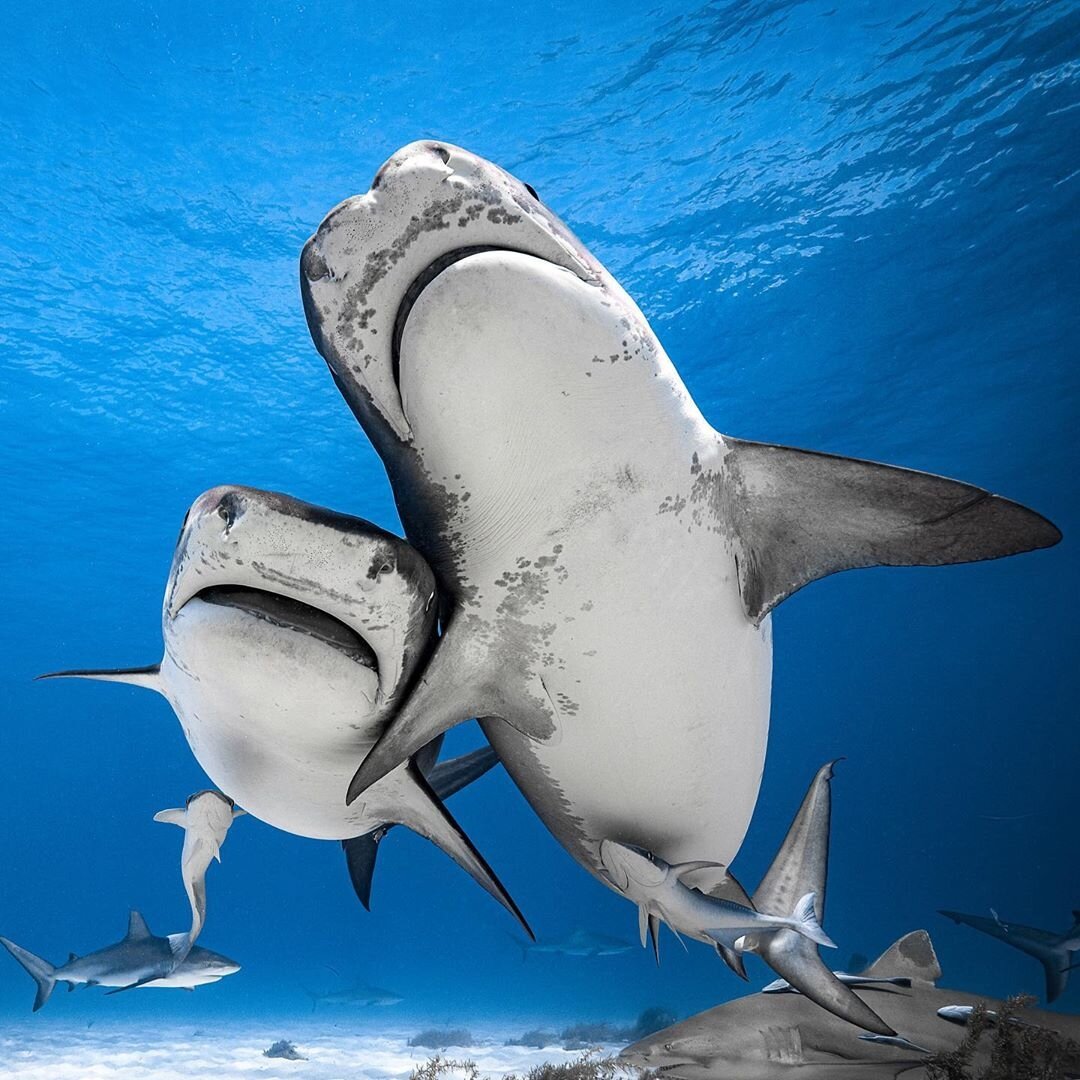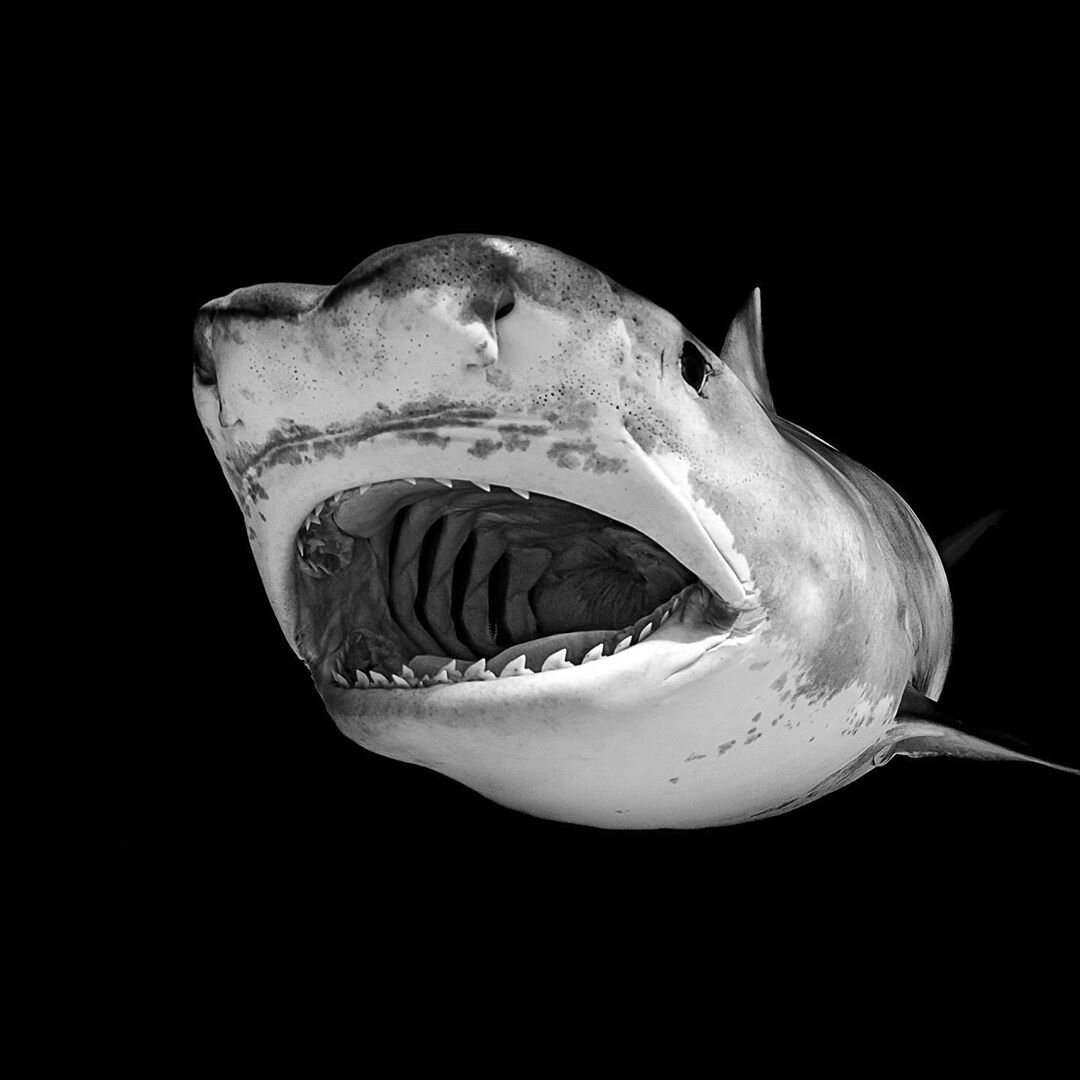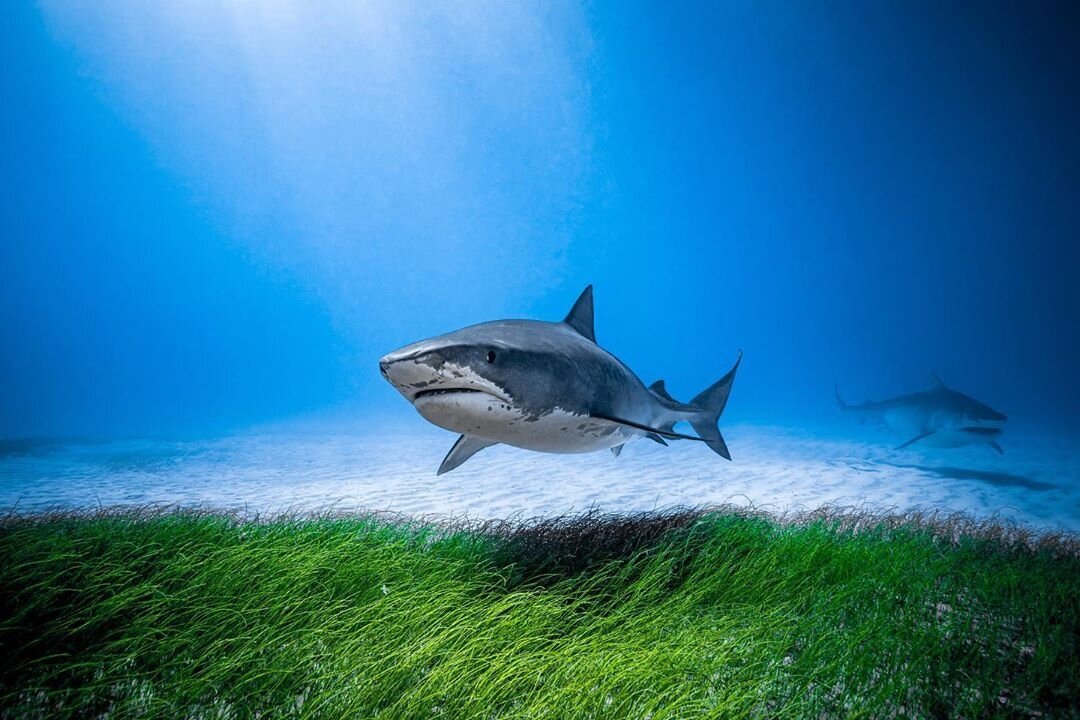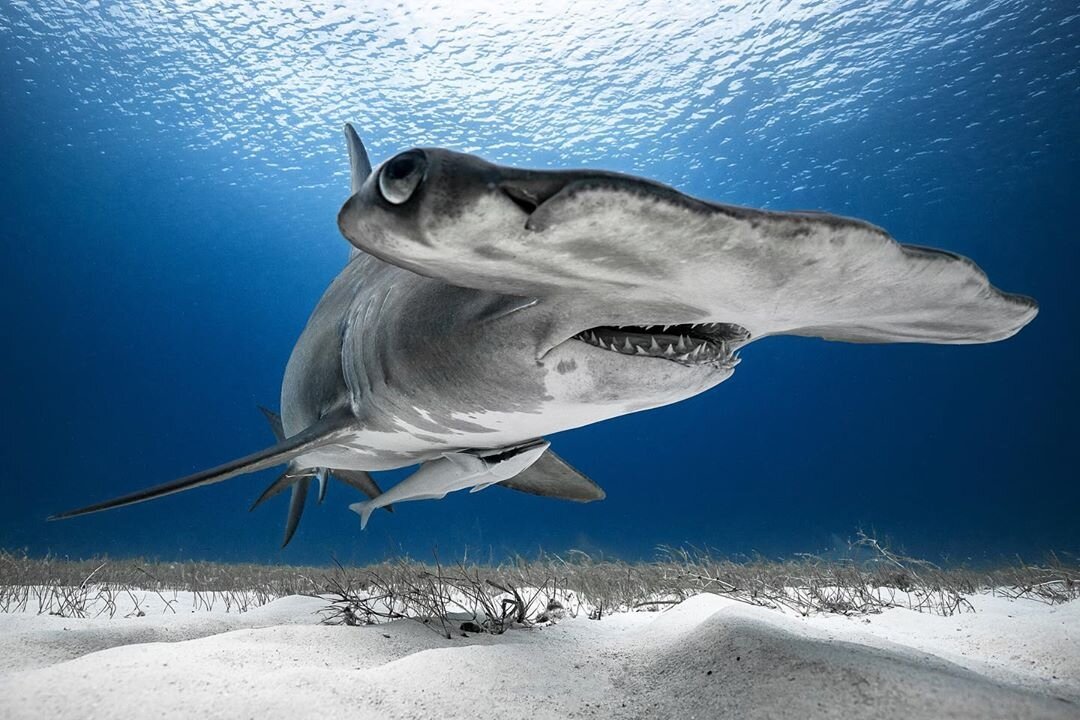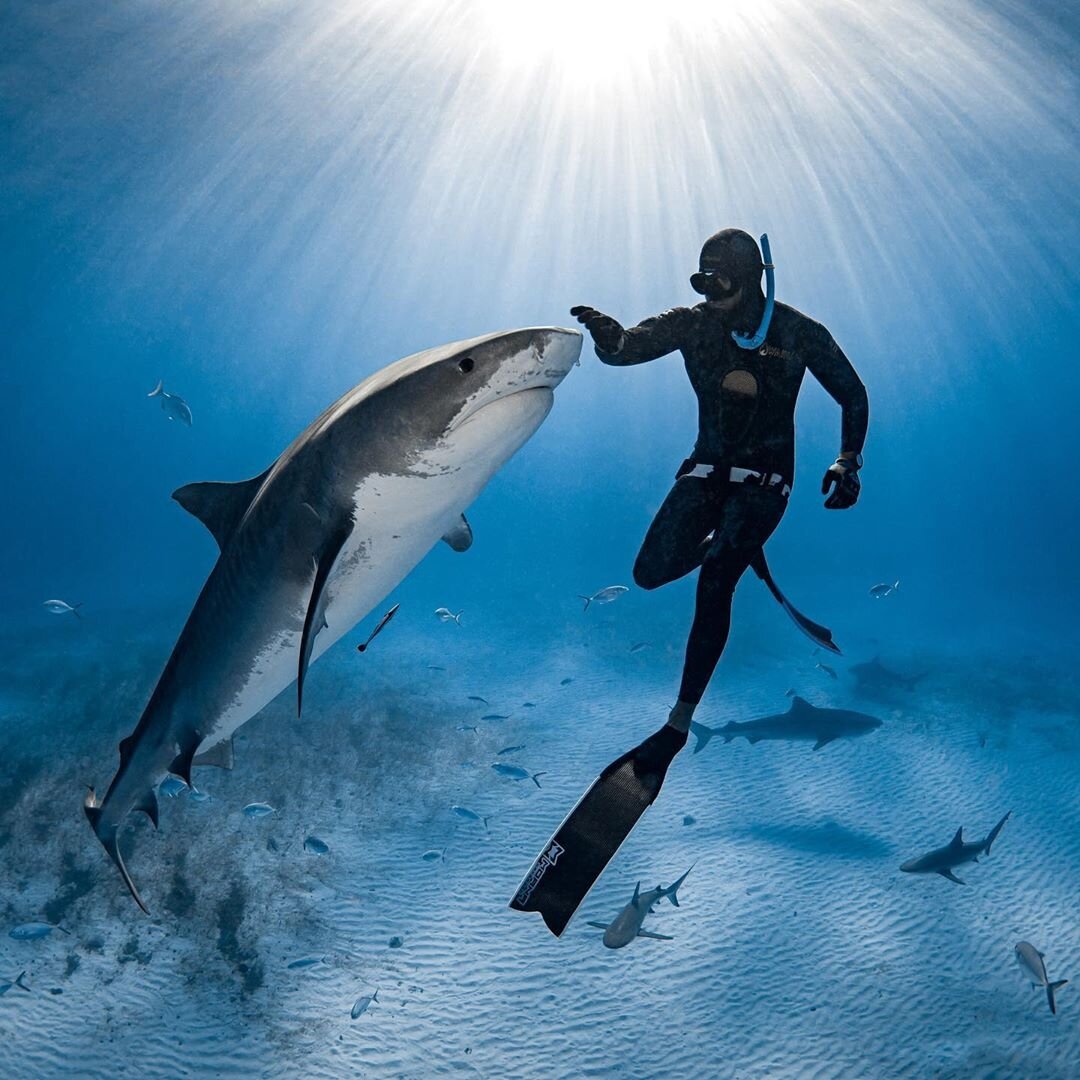Shark Week 2020
Last month we celebrated Shark Week - An annual TV extravaganza devoted to conservation efforts and correcting misconceptions about the oceans apex predators. Hosted by the discovery channel this event began in 1988 and is broadcasted to screens around the world.
After reaching millions of people in the US, Shark Week 2020 returned to our screens in the UK for its 32nd instalment. Over the course of a week, The Discovery Channel featured the collaboration of shark experts, filmmakers, conservationists and celebrities, who have come together to celebrate this pop culture phenomenon and global interest in shark conservation.
To celebrate these mysterious creatures we have collected some of the most beautiful imagery ever captured. Beginning with photographs from the talented photojournalist, explorer and World Champion freediver Julia Wheeler…
With a single breath, Julia captures images of critically endangered Hammerhead Sharks and Grey Nurse Hounds amongst the beauty of Bimini, the Bahamas.
Her inspiration to explore the pristine waters of the Caribbean surfaced when she discovered that the Bahamas declared their 200-mile economic zone a shark sanctuary, dedicated to allowing these prehistoric species to thrive.
Instagram - @iamjuliawheeler
Website - juliawheeler.com
A marine biologist, conservationist, professional freediver, professional scuba instructor, surfer, swimmer, yogi, and model, ocean Ramsey is doing it all from O‘ahu, Hawaii.
Currently, her research seeks to measure if shark behaviour is significantly affected by environmental specifics such as weather and the presence of other animal species. Partnered with professional shark and conservation photographer, captain, freediver and divemaster, Juan Oliphant (@Juansharks), she opened the public pelagic shark program through One Ocean Research.
Below Ramsey shares her advice for what to do if you are lucky enough to be approached by a large shark:
1. Look at it.
2. Face it.
3. Glance around for other sharks as it approaches.
4. Slowly back away and extend any object towards it…
If they continue to approach you may need to physically deter them (I love that sharks are one of the few animals that will swim up to you given enough time and depending on the species & situation of course) If they come at you then purposefully place your hand on top of their head (not the front of the nose or anywhere close to the mouth) then lock your elbow, and push yourself up and over or off to the side and look around and repeat if needed (unlikely).
Website - oceanramsey.com
Joseph Platko - a nature and underwater photographer residing in Monterey, California.
In March last year, Joe visited the healthy shark population that is currently thriving in the surrounding waters of the Bahamas. Great Hammerheads, Oceanic Whitetips and Tiger sharks are just three migratory species that pass through these waters seasonally.
In the 1990s the Bahamas took its first significant step towards shark conservation with the banning of harmful longline fishing. By 2011, they declared their entire exclusive economic zone a shark sanctuary. This not only banned commercial shark fishing but also prohibited the trade and possession of any shark parts. For the first time, the value of a Caribbean reef shark was estimated to be 'worth' $250,000 if kept alive. The same shark would generate approximately $50 if killed and sold. It was the first time a ‘kept alive value' had been calculated for a shark.
A healthy shark population is critical for the overall health of the marine ecosystem as well as the economy. Shark tourism brings in people from all over the world, offering personal experiences which can reshape attitudes and opinions about these majestic creatures.
@hiimjoe88
Website - www.joeplatkophotography.com
In July 2011 The Bahamian Sanctuary was created by adding an amendment to the Fisheries Resources to prohibit commercial shark fishing along with the sale, importation and export of any shark products.
This law permanently protects more than 40 endangered shark species in the approximately 243,244 square miles (630,000 square kilometres) of the Bahamas surrounding waters. This island nation joins Palau, the Maldives and Honduras in the vital protection of sharks. Together, this adds up to almost 2.4 million square kilometres (926,645 square miles) of the ocean, where these animals can now swim safely.
These islands are paving the way and setting new standards for important ocean conservation. Globally, commercial fisheries kill up to 73 million sharks annually - threatening the future existence of all marine species.
We applaud the people and government of the Bahamas for being bold leaders in marine conservation.
Talented ocean adventurer and underwater photographer Alex Voyer is sailing around the globe searching out his personal stories from the ocean. Originally from France, Alex spends his days on his sailboat Diatomée, exploring the oceans from the poles to the tropics to raise awareness for our marine environment.
“Does he remember me?” - Alex Voyer
While freediving around the Azores, an archipelago in the mid-Atlantic, Alex captured this personal moment he shared with a beautiful Blue shark.
Blue sharks are curious, open-ocean predators that migrate around the world, from the tropics to cold temperate waters like the UK. In the Atlantic, they appear to follow a clockwise route from the Caribbean to the UK, returning following the Atlantic North Equatorial Current.
Despite the myth that fish have terrible memories, recent studies show that sharks and even goldfish are a lot smarter than we think. Dr Vera Schluessel and Theodora Fuss, experts in marine sciences and neurobiology, have been researching the intelligence of the Grey Bamboo shark, a small carpet shark from the Indo-West Pacific Ocean.
After proving that sharks can be trained to recognise and remember shapes and different length lines, Theodora also showed that they can perceive optical illusions. Testing the sharks again one year later, almost all of them remembered their training. A year is a long time to remember a trick, placing Gray Bamboo sharks in fierce competition with birds and even primates. It is likely that larger visual hunters such as the Blue shark are capable of even greater mental feats.
@alexvoyer_fisheye
@diatomee_water_adventure
Website - www.alexvoyer.com
Ocean Culture Life Storyteller, Zach Stadler, shares these imitate moments he had while photographing the largest predatory fish in the world near Guadalupe Island, Mexico.
Known as the best destination to see an abundance of Great Whites, this volcanic island is an important leader in the ongoing behavioural studies, conservation and photography of this species.
Forty-five years ago, the classic motion picture Jaws hit the big screens. Its misrepresentation of great whites as an oversized mindless killer shaped the way many of us viewed sharks. In hindsight, the author of Jaws, Peter Benchley, is deeply disturbed by this. "Knowing what I know now, I could never write that book today," he said, years later. "Sharks don't target human beings, and they certainly don't hold grudges." After its release, he spent the rest of his life campaigning for the protection of sharks.
As scientific research of these elusive predators increases, their image as vicious killing machines is beginning to fade. Simply the largest fish in the sea, Great whites can grow to an average of 15 feet in length. They play an important role in the ecosystem by maintaining the species below them in the food chain and serving as an indicator for ocean health.
In 2012, French Polynesia (a group of five major archipelagos with more than 100 islands) and the neighbouring Cook Islands created the world’s largest ocean sanctuary, spanning almost 2.5 million square miles. This action reflected the growing trend to protect sharks worldwide and more than doubled the area off-limits to any shark fishing. The narrow passes that run between the islands create a unique marine environment with a constant transition between the open sea and lagoon life.
These sanctuaries are crucial to the survival of all marine life. Although sharks have been around for more than 400 million years, today more than a third of all shark species face the threat of extinction due to the relentless pressure we put on the ocean.
In marine protected areas like this, lemon, tiger, blacktip, whitetip, blackfin, silvertips, mako, hammerhead, and all other species of shark are protected from human influence and destruction. The idea that a shark is worth more alive than dead is being respected, and an increase in tourism-related marine conservation is putting French Polynesia on the ocean conservation map.
Currently working in Guadalupe as a specialist and tour guide, Jimi Partington is leading expert on Great White Sharks.
“During shark season a typical day comprises of a very early start followed by scheduling and setting up the day ahead. The day includes showcasing wildlife to our guests as well as keeping their safety in mind at all times. If working on a film production, then just about anything can go down on any particular day! It’s a long day and a late finish as I will still usually be working away until 10-11pm on the vessel.” – Jimi Partington
Originally from Jersey CI, Jimi has spent thousands of hours in the company of sharks all over the world. With over 10 years of experience, he has been chosen by The Discovery Channel, The BBC and a host of other film networks, to showcase his skills and knowledge for diving with these ancient creatures.
@jimipartingtonsdx
@sharkdivingxperts
Website - sharkdivingxperts.com
OCL storyteller, freediver & environmental scientist, Jono Allen has dedicated his life to understanding the marine environment and sharing his unique experiences with wildlife. Using breath-taking photography to capture the personality of his underwater subjects, he gives us an insight into their alien world.
‘Respect The Hierarchy’
Found cruising in the shallow, warm waters of Fiji, Bull sharks are agile predators that hunt fish, dolphins, and even other sharks. Because they are slightly more aggressive and tend to live near highly populated areas, many experts consider them to be the most dangerous sharks in the world. The truth is, although not often, Bull Sharks do attack people inadvertently or out of curiosity due to sharing their home with beachgoers. These misunderstood ocean predators are joined with Great whites and Tiger sharks, as the three species most likely to attack a person. Yet, without protection from human interference, they are extensively hunted and killed for their meat, fins and oils. Although Fiji has implemented strong conservation measures for other important marine species such as whales and dolphins, sharks are not yet protected here.
Back at his home in Byron Bay, Australia, Jono captures this magical moment as Golden Leopards Sharks circle and swirl below the surface. As just one of four Marine Parks in New South Whales, this conservation area includes 220 square kilometres (85 sq miles) of protected ocean habitat.
@jonoimages
Website - www.jonoallen.com
After studying marine biology at Southampton University, OCL Storyteller Simon Hilbourne has worked with marine megafauna in some of the world’s most beautiful oceans.
A talented photographer, scientist and conservationist, fascinated with the underwater world, Simon co-founded ‘Scubography’ - a platform to share his passion and experiences. Today he has worked his way up to leading the Maldives Oceanic Manta Ray Project and is the charities digital media and communications manager.
“Whale sharks have long had a tricky relationship with fishermen. In the Maldives, whale sharks are attracted to lights used by fishermen for bait fishing at night but are largely seen as a nuisance. These unwanted giant guests are speared, smacked and prodded with poles in an attempt to make them leave. Sometimes, however, the sharks turn up at the boats of far more welcoming viewers. I captured this whale shark feeding on plankton drawn in the by the light off the back of a dive liveaboard in Thaa Atoll. Despite his untimely arrival at 4 am, everyone on board was thrilled by his quick appearance.” - Simon Hilbourne
Whale sharks are slow-moving, filter-feeding carpet sharks which can grow up to 40 feet (12 meters) long. These gentle giants are often found in the open waters of tropical oceans and can live to be a least 50 years old. Based on their sizes, some experts believe they could reach 130.
@s.hilbourne
Coral reefs are dependent on healthy shark populations just as sharks rely on reefs for prey, protection and safe habitats for their nurseries. As well as sitting at the top of the food chain, protecting the natural balance of the ecosystem, sharks cycle nutrients in from the open ocean and remove invasive species / weaker diseased fish that are not good for the health of the reef.
The Maldives atolls are a chain of 26 islands, each formed by a ring-shaped coral reef, that span over 470 miles across the Indian Ocean. This Island Nation owes its existence to its coral reef system yet fishing, pollution, coastal development and climate change is threatening the future of its sea-level atolls and the people who depend on them. Although they are not yet protected, these reefs contain over a quarter of all known hard coral species on earth and a rare abundance of marine giants like sharks, turtles and manta rays.
Captured beautifully in front of an expanse of open ocean, just beyond the coral's edge, a Blacktip reef shark patrols the drop off. Shot by the talented OCL storyteller, 22-year-old photographer and science graduate Marcus De La Haye from Jersey CI.
@marcusdelahayephotography
As Shark Week 2020 drew to a close, we were proud to share the work of freediver and underwater photographer, James Ferrara.
Over the course of two weeks, we shared some of the most beautiful imagery ever created and celebrated Storytellers, Scientists and Photographers from around the world. Looking at the Maldives, French Polynesia, Guadalupe, Hawaii, Fiji, Bahamas and the Azores, we have seen what a difference Marine Protected Areas can make for the health of our seas.
The ocean is the heart of our planet, covering over 75% of its surface, we rely on it for food, oxygen and a stable climate. A healthy ocean needs a healthy shark population, yet scientists estimate that over the past 50 years, 90% of the world’s sharks have disappeared mostly due to destructive fishing and pollution. However, sharks have survived multiple mass extinction events and adapted to thrive in extreme habitats, from the shallow coastal sea to the deepest darkest ocean, their ability to survive provides hope for the future. Shark Week aims to educate and inspire millions of people to take an active role in protecting all marine life, making daily choices to reduce the impact they have on the ocean.
“In the end, people will only protect what they love, and only love what they understand.”- Senegalese environmentalist Baba Dioum
Together we have the power to learn, educate and share information on the plight of the shark. Here are five things everyone can do to protect the marine environment…
1. DEMAND PLASTIC-FREE ALTERNATIVES
2. REDUCE YOUR CARBON FOOTPRINT
3. AVOID OCEAN-HARMING PRODUCTS
4. EAT SUSTAINABLE SEAFOOD
5. VOTE ON OCEAN ISSUES
@jferraragallery
@agustinelejalde
This year we learnt how the current Covid-19 pandemic is impacting our seas. Marine Biologist and PhD Alison Towner explains how the Worldwide shutdown affected the behaviour and safety of sharks…
1. Decreased marine surveillance - Illegal fishing has gone unchecked.
2. Shark eco-tourism remains shut - This work is crucial to the survival of the shark stocks and our knowledge on their health and numbers.
3. Research and science budget cuts by governments
4. Shark nets removed or reduced - In South Africa, and other parts of the world, beach safety nets and drum lines were either removed or reduced significantly due to a lack of people able to maintain them. Designed to attract and entangle sharks, these nets kill thousands every year.
5. Outreach and awareness education skyrocketed - Lectures and webinars on shark species, conservation and research enabled younger generations to interact with scientists and conservationists from all around the world...
Lockdown has been both a blessing and a curse for the marine environment. Although the shark populations have benefited from a drop in human interference, it is clear that we must implement stricter rules to protect them from any further harm.
